Calcaneal tendon rupture. Achilles Tendon Rupture: Causes, Symptoms, and Treatment Options
What is the Achilles tendon and how does it function. What causes Achilles tendinitis and tendon rupture. How are these conditions diagnosed and treated. What are the key symptoms to watch for.
Understanding the Achilles Tendon: Structure and Function
The Achilles tendon, also known as the calcaneal tendon, is a crucial component of the human musculoskeletal system. As the largest and strongest tendon in the body, it plays a vital role in our ability to walk, run, and jump. But what exactly is this tendon, and how does it function?
The Achilles tendon is a thick, fibrous cord that connects the calf muscles (gastrocnemius and soleus) to the heel bone (calcaneus). Its primary function is to transmit the force generated by the calf muscles to the foot, enabling plantarflexion of the ankle joint. This action is essential for pushing off the ground when walking or running.
Key Facts About the Achilles Tendon:
- Location: Back of the lower leg, connecting the calf to the heel
- Length: Approximately 15 cm (6 inches) in adults
- Strength: Can withstand forces of up to 1,000 pounds during running
- Composition: Primarily made of collagen fibers
Despite its strength, the Achilles tendon is susceptible to injury, particularly when subjected to excessive stress or repetitive strain. Two common conditions affecting this tendon are Achilles tendinitis and Achilles tendon rupture.

Achilles Tendinitis: Causes, Symptoms, and Risk Factors
Achilles tendinitis is an overuse injury characterized by inflammation and irritation of the Achilles tendon. This condition often develops gradually and can become chronic if left untreated. But what causes Achilles tendinitis, and who is at risk?
Common Causes of Achilles Tendinitis:
- Sudden increase in physical activity or training intensity
- Repetitive stress from running or high-impact sports
- Poor footwear or inadequate support
- Biomechanical issues such as flat feet or overpronation
- Tight calf muscles
- Age-related degeneration of the tendon
Recognizing the symptoms of Achilles tendinitis is crucial for early intervention and effective treatment. Typical signs include:
- Mild pain above the heel, especially after activity
- Stiffness in the leg, particularly in the morning
- Swelling around the tendon
- Difficulty climbing stairs or running uphill
- A warm sensation in the affected area
Athletes and individuals who engage in high-impact activities are particularly susceptible to Achilles tendinitis. However, anyone can develop this condition, especially those with certain risk factors such as age (30-50 years old), obesity, or certain medical conditions like diabetes.
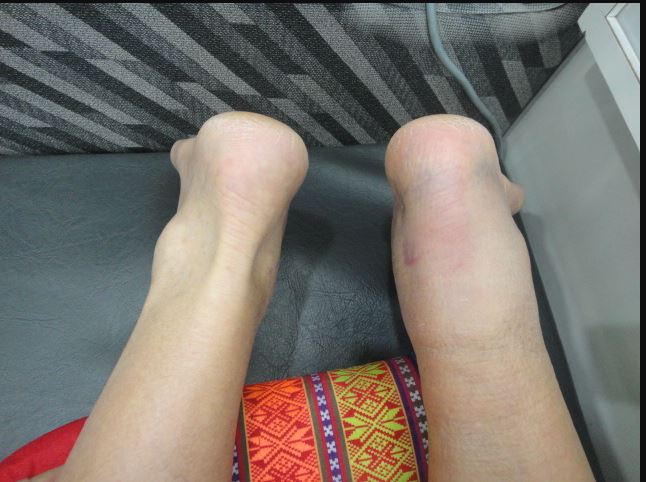
Achilles Tendon Rupture: A Serious Injury
While Achilles tendinitis is a chronic condition, an Achilles tendon rupture is an acute injury that occurs when the tendon partially or completely tears. This injury can be devastating, often requiring immediate medical attention and a lengthy recovery period. But what exactly happens during an Achilles tendon rupture?
An Achilles tendon rupture typically occurs when the tendon is subjected to sudden, intense force that exceeds its capacity to withstand stress. This can happen during sports activities or even during everyday movements in some cases.
Symptoms of Achilles Tendon Rupture:
- A sudden, sharp pain in the back of the ankle or calf
- An audible “pop” or “snap” at the time of injury
- Difficulty walking or bearing weight on the affected leg
- Swelling and bruising around the heel
- Inability to stand on tiptoes or push off when walking
- A visible gap in the tendon upon inspection
Unlike tendinitis, which develops over time, a tendon rupture is often the result of a specific incident or movement. Common scenarios leading to Achilles tendon rupture include:
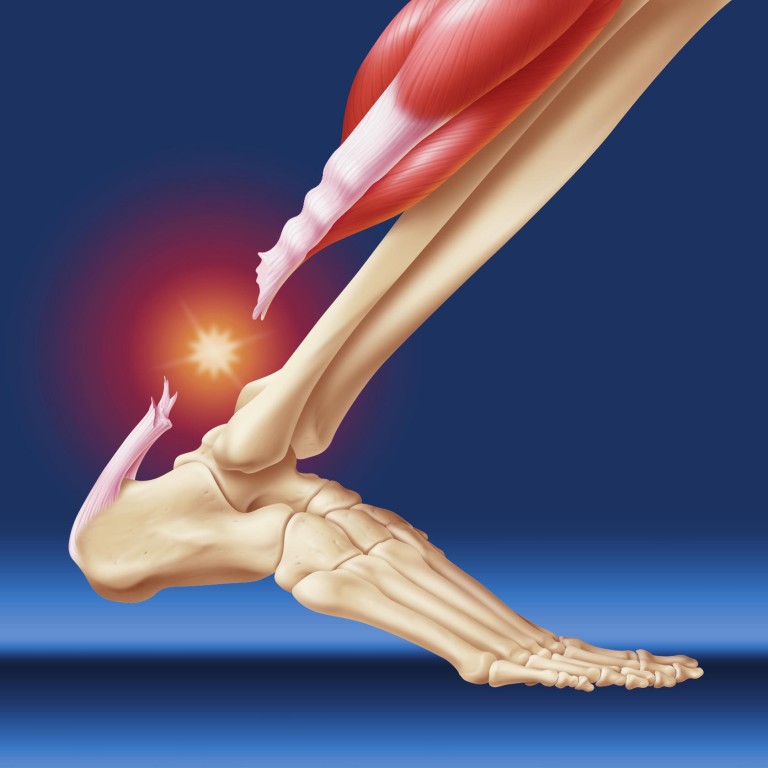
- Sudden acceleration or change of direction during sports
- Falling from a height
- Stepping into a hole or off an unexpected ledge
- Severe overstretching of the tendon
Diagnosis of Achilles Tendon Injuries: Clinical Evaluation and Imaging
Accurate diagnosis of Achilles tendon injuries is crucial for determining the appropriate treatment plan. Healthcare providers use a combination of clinical examination and imaging techniques to assess the extent and severity of the injury. How do doctors diagnose Achilles tendon problems?
Clinical Examination:
The initial assessment typically involves a thorough physical examination. The healthcare provider will:
- Inspect the affected area for swelling, discoloration, or deformity
- Palpate the tendon to check for tenderness or gaps
- Assess range of motion and strength
- Perform specific tests, such as the Thompson test for tendon rupture
Imaging Studies:
While many Achilles tendon injuries can be diagnosed through clinical examination alone, imaging studies may be used to confirm the diagnosis or assess the extent of the injury:
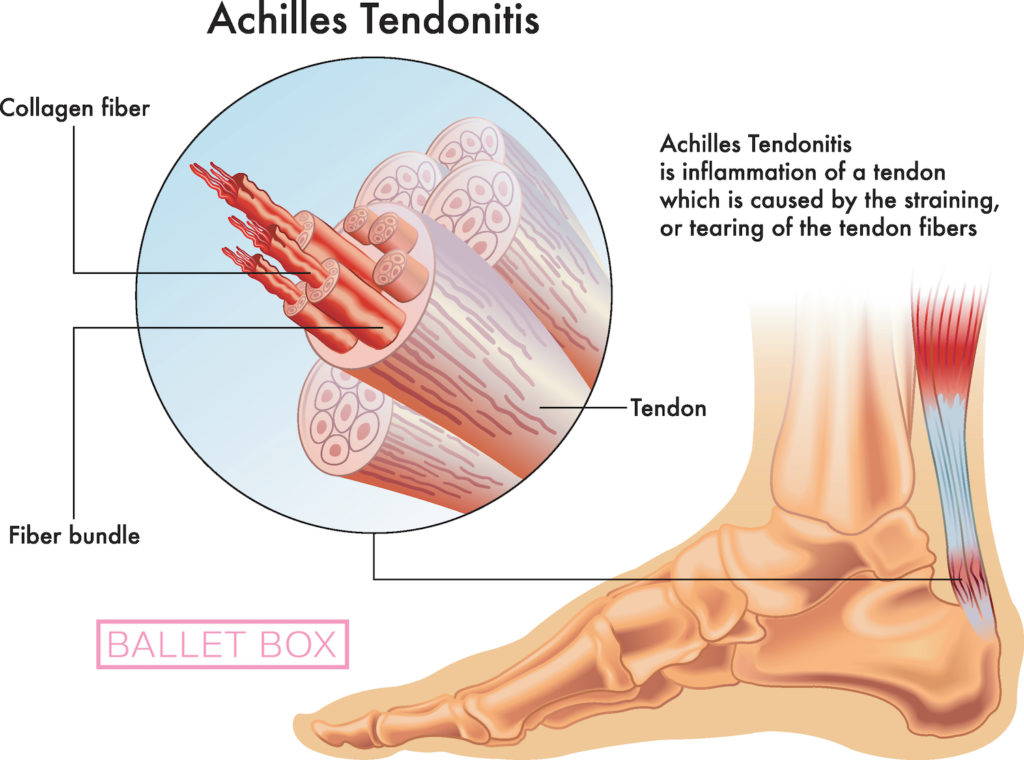
- Ultrasound: Provides real-time images of the tendon structure and can detect partial or complete tears
- MRI (Magnetic Resonance Imaging): Offers detailed images of soft tissues, useful for assessing the severity of tendinitis or confirming a rupture
- X-rays: While not typically used for tendon injuries, they may be ordered to rule out other conditions such as heel spurs
The combination of clinical findings and imaging results allows healthcare providers to make an accurate diagnosis and develop an appropriate treatment plan tailored to the individual patient’s needs.
Conservative Treatment Approaches for Achilles Tendon Injuries
For many Achilles tendon injuries, especially cases of tendinitis or partial tears, conservative treatment is often the first line of approach. These non-surgical methods aim to reduce pain, promote healing, and restore function. What are the main components of conservative treatment for Achilles tendon injuries?
RICE Protocol:
The RICE protocol is a widely used initial treatment strategy for many soft tissue injuries, including Achilles tendon problems:
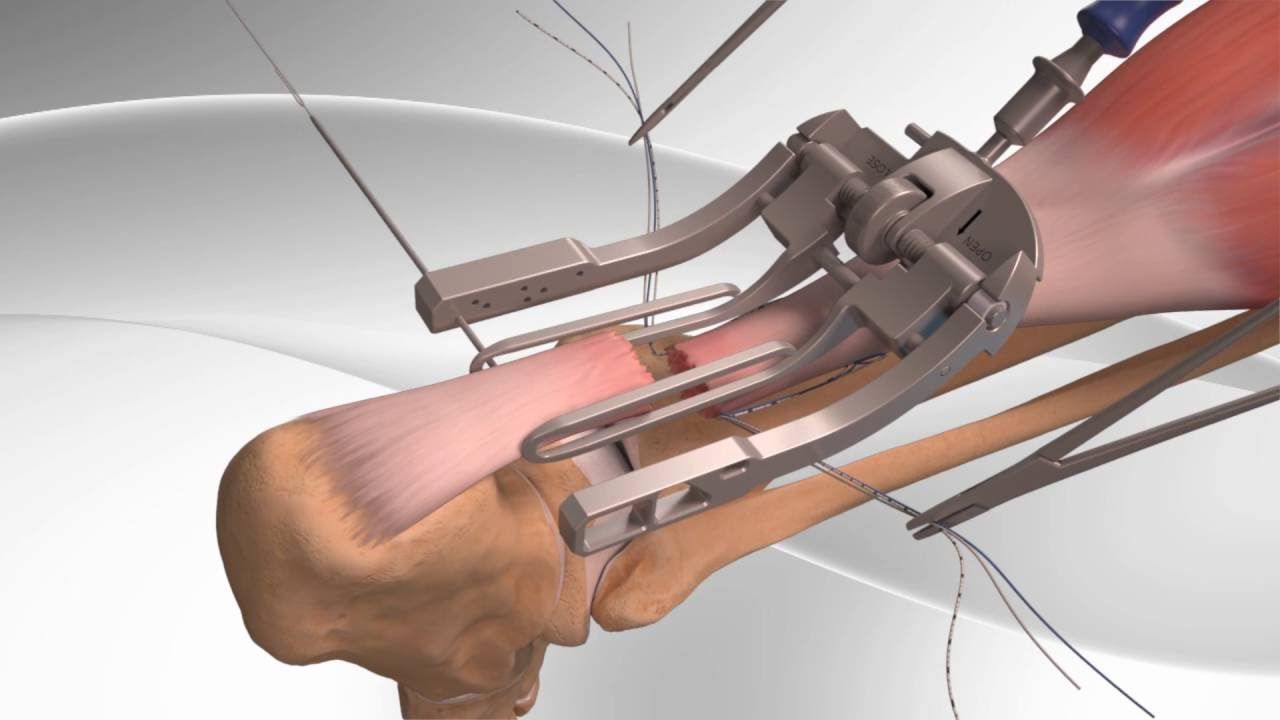
- Rest: Avoiding activities that cause pain or stress to the tendon
- Ice: Applying cold packs to reduce inflammation and pain
- Compression: Using elastic bandages to minimize swelling
- Elevation: Keeping the affected leg elevated to reduce blood flow and swelling
Medications:
Over-the-counter nonsteroidal anti-inflammatory drugs (NSAIDs) such as ibuprofen or naproxen may be recommended to manage pain and reduce inflammation. In some cases, prescription medications might be necessary.
Physical Therapy:
A structured physical therapy program is often crucial for recovery from Achilles tendon injuries. This may include:
- Stretching exercises to improve flexibility
- Strengthening exercises for the calf muscles and ankle
- Eccentric loading exercises, which have shown particular benefit for Achilles tendinitis
- Gait training and proprioception exercises
Orthotic Devices:
Various orthotic devices may be used to support the tendon and promote healing:
- Heel lifts or shoe inserts to reduce stress on the tendon
- Night splints to maintain a gentle stretch on the tendon while sleeping
- Walking boots or casts for more severe injuries
Conservative treatment can be highly effective for many Achilles tendon injuries, particularly when initiated early. However, severe cases or those that don’t respond to conservative measures may require surgical intervention.

Surgical Interventions for Achilles Tendon Ruptures
While conservative treatment can be effective for many Achilles tendon injuries, complete ruptures often require surgical intervention. The decision to perform surgery depends on various factors, including the patient’s age, activity level, and overall health. What are the surgical options for Achilles tendon ruptures?
Open Surgery:
Traditional open surgery involves making an incision in the back of the lower leg to access the ruptured tendon. The surgeon then sutures the torn ends of the tendon back together. This method allows for direct visualization of the injury and thorough repair but may carry a higher risk of wound complications.
Minimally Invasive Surgery:
Minimally invasive or percutaneous techniques use smaller incisions and specialized instruments to repair the tendon. These approaches may result in fewer wound complications and faster recovery times, but they may not be suitable for all types of ruptures.
Surgical Procedure:
Regardless of the specific technique used, the general steps of Achilles tendon repair surgery include:
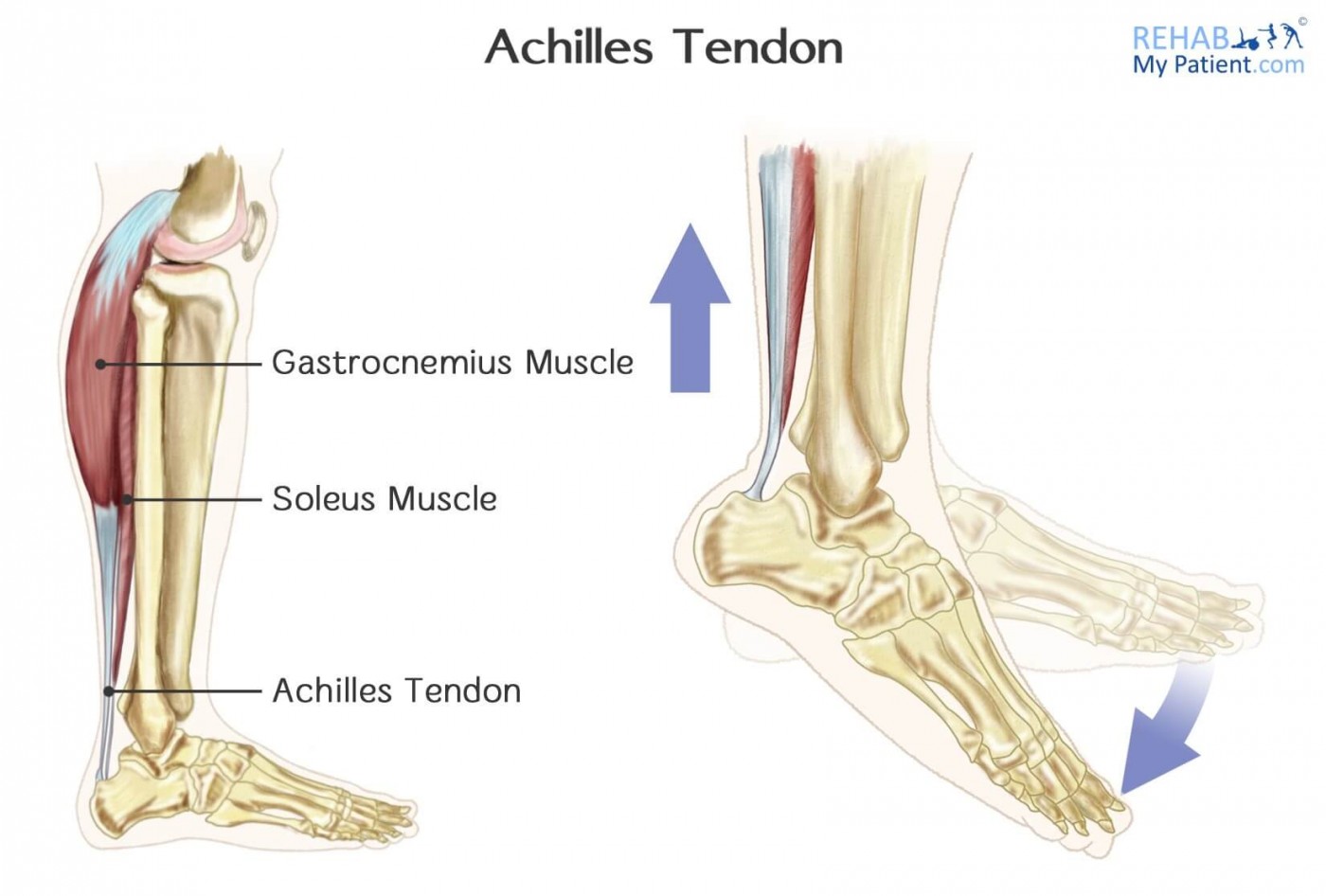
- Administering anesthesia (general or regional)
- Making the necessary incision(s)
- Identifying and assessing the ruptured tendon ends
- Removing any damaged tissue
- Suturing the tendon ends together
- Closing the incision
Post-Surgical Care:
After surgery, patients typically follow a structured rehabilitation program that includes:
- Immobilization in a cast or boot for several weeks
- Gradual weight-bearing as tolerated
- Physical therapy to regain strength and flexibility
- Progressive return to normal activities over several months
While surgery can effectively repair a ruptured Achilles tendon, it’s important to note that recovery can be lengthy, often taking 4-6 months or more before a return to full activity is possible.
Prevention Strategies for Achilles Tendon Injuries
Given the potential for long recovery times and the impact on daily activities, preventing Achilles tendon injuries is crucial. While not all injuries can be avoided, there are several strategies that can help reduce the risk of developing Achilles tendon problems. What are some effective ways to prevent Achilles tendon injuries?
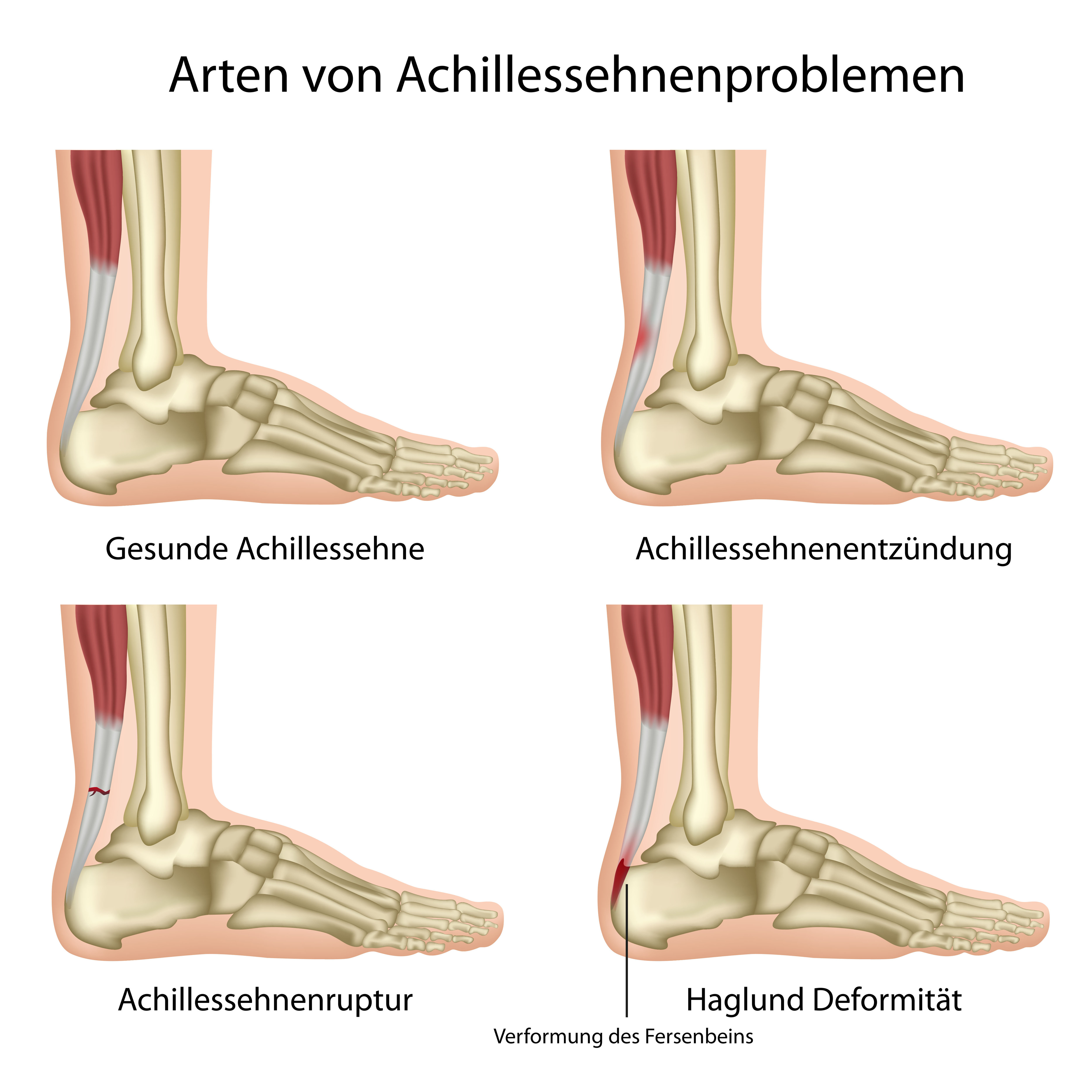
Proper Warm-up and Stretching:
Adequate preparation before physical activity is essential:
- Perform a thorough warm-up to increase blood flow to the muscles and tendons
- Include dynamic stretching exercises focusing on the calf muscles and Achilles tendon
- Gradually increase intensity during warm-up to prepare the body for more strenuous activity
Gradual Progression in Training:
Avoid sudden increases in training intensity or volume:
- Follow the 10% rule: increase weekly mileage or training load by no more than 10% per week
- Incorporate rest days into your training schedule to allow for recovery
- Vary your training routine to avoid repetitive stress on the Achilles tendon
Proper Footwear and Equipment:
Choosing the right shoes and equipment can significantly impact Achilles tendon health:
- Select shoes appropriate for your foot type and activity
- Replace running shoes regularly (typically every 300-500 miles)
- Consider using orthotic inserts if you have flat feet or other biomechanical issues
- Ensure proper fit and support in all athletic shoes
Strength and Flexibility Training:
Maintaining strong and flexible muscles can help protect the Achilles tendon:

- Incorporate calf-strengthening exercises into your routine
- Practice regular stretching, especially of the calf muscles
- Include balance and proprioception exercises to improve overall lower leg stability
- Consider cross-training with low-impact activities to reduce repetitive stress
Listen to Your Body:
Paying attention to early warning signs can prevent more serious injuries:
- Be aware of any pain or discomfort in the Achilles tendon area
- Address minor aches and pains promptly to prevent them from developing into more serious issues
- Take breaks or reduce activity if you experience persistent pain or stiffness
By implementing these prevention strategies, individuals can significantly reduce their risk of developing Achilles tendon injuries. However, it’s important to remember that some factors, such as age and certain medical conditions, may increase the risk of injury regardless of preventive measures.
Achilles Tendon & Injuries
Overview
What is the Achilles tendon?
The Achilles tendon is the largest, strongest tendon in the human body. Tendons are long, tough cords of tissue that connect muscle to bone. The Achilles tendon is located in the back of the heel and connects the heel bone to the calf muscle. It helps a person walk, run and jump. The Achilles tendon is able to endure stress, but sometimes injury can occur to the tendon when it is overly stressed.
What is Achilles tendinitis?
Overuse of the Achilles tendon may cause the tendon to swell, become irritated, inflamed, and painful. This is Achilles tendinitis. It is a common sports injury that is related to running, but it can happen to anyone who puts a lot of stress on their feet (e.g., basketball players and dancers). If one does not get treatment for Achilles tendinitis, the problem can become chronic (long-term) and make it difficult to walk.
What is an Achilles tendon rupture?
In an Achilles tendon rupture, the tendon that connects the heel bone to the calf muscle tears and the fibers separate. This happens mostly to people between the ages of 30 and 50, and usually is caused by sports activity.
This happens mostly to people between the ages of 30 and 50, and usually is caused by sports activity.
Symptoms and Causes
What causes Achilles tendinitis?
Achilles tendinitis is caused by a great deal of stress on the feet. It is a common athletic injury. Things that can cause tendinitis include:
- Pushing the body too fast and too soon
- A sudden increase in activity
- Sports that have quick starts and stops
- Poor fitting shoes/bad footwear
- Injury to the Achilles tendon
- Running or exercising on uneven ground
- Running uphill
- Tight calf muscles
- Bone spur (extra bone growth in the heel that rubs the tendon and causes pain)
- Flat arches, feet that roll in (overpronation), and weak calf muscles
- Not warming up before exercising
What are the symptoms of Achilles tendinitis?
Common symptoms of Achilles tendinitis include:
- Weakness in the leg
- Slight pain in the lower leg above the heel after activity
- Feeling of stiffness in the leg that usually appears in the morning and lessens throughout the day
- Bad pain the day after exercising
- Pain as you climb stairs or go uphill
- Swelling in the area of the Achilles tendon
What causes an Achilles tendon rupture?
The causes of an Achilles tendon rupture are very similar to those of Achilles tendinitis. Causes include:
Causes include:
- Running uphill;
- Running on a hard surface;
- Quickly changing speeds from walking to running;
- Playing sports that cause you to quickly start and stop.
What are the symptoms of Achilles tendon rupture?
Symptoms of Achilles tendon rupture include the following:
- A pop or snap when the tendon tears
- Severe pain in back of the ankle, making it difficult to walk
- Swelling and discoloration
- Tenderness
- Inability to rise on the toes
- A gap in the back of the ankle where the tendon ends separated after the tear.
Diagnosis and Tests
How is Achilles tendinitis diagnosed?
If you think you have Achilles tendinitis, make an appointment to see your doctor. The doctor will ask you about your recent activity and look for signs, such as:
- The foot not flexing when the calf muscle is pressed (if the Achilles ruptures)
- Swelling on the back of the heel
- Pain in the back of the heel
- Limited range of motion in the ankle
An ultrasound or MRI scan can check for tendinitis.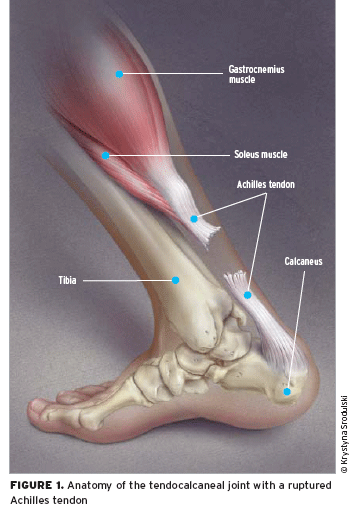 If the tendon is enlarged, this can often be seen on radiographs (images).
If the tendon is enlarged, this can often be seen on radiographs (images).
How is an Achilles tendon rupture diagnosed?
The doctor will look at your foot, ankle, and leg. Often, the physical exam alone is enough to diagnose an Achilles tendon rupture. An ultrasound or a MRI may be used to determine the severity of the tear and the extent of separation of the fibers.
Management and Treatment
How is Achilles tendinitis treated?
Nonsurgical treatment is typically recommended first. Pain that lasts more than six months may require surgery.
Nonsurgical treatment methods include the following:
- Rest and stop doing activities that cause stress to the tendon.
- Apply ice to the tendon for 15 minutes after exercising.
- Compress the tendon by using an athletic wrap or surgical tape.
- Elevate the painful extremity. You can reduce swelling by lying down and raising your foot to a level that is above your heart.
- Stretch your ankles and calf muscles.

- Take anti-inflammatory medication (for example, ibuprofen) to reduce swelling.
- Wear heel lifts in good running shoes.
- Avoid barefoot walking or walking in shoes without a heel lift.
- Avoid walking up inclines, climbing ladders, and climbing stairs, if possible.
- Use a night splint.
- Take part in physical therapy.
- Depending on how severe the pain is, you can use a walking boot or walking cast.
How is an Achilles tendon rupture treated?
If you suspect you have an Achilles tendon rupture, you should see your doctor right away. There are surgical and non-surgical ways to treat the rupture. Surgery is the most common treatment.
Non-surgical treatment
The foot and ankle are flexed downward in a cast or boot. The cast or a boot will stay on anywhere from 8 to 12 weeks. Physical therapy will follow.
Surgical treatment
Surgery is recommended for those who are young to middle-aged and active.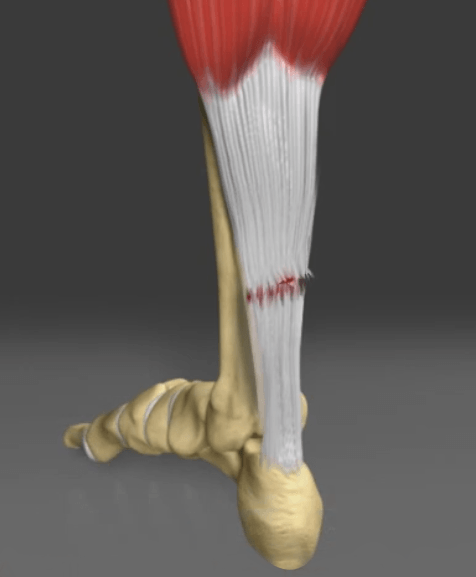 The ruptured tendon is sewn together during surgery. This is an outpatient procedure. Afterward, the leg is put into a splint cast or walking boot. Physical therapy will be recommended as the tendon heals.
The ruptured tendon is sewn together during surgery. This is an outpatient procedure. Afterward, the leg is put into a splint cast or walking boot. Physical therapy will be recommended as the tendon heals.
Healing is nearly complete in about 4 to 6 months. However, it can take up to a year to return to sports fully.
Prevention
How can you prevent Achilles tendinitis?
There are several things you can do to reduce the risk of Achilles tendinitis:
- Warm up every time before you exercise or play a sport.
- Switch up your exercises.
- Slowly increase the length and intensity of your workouts.
- Keep your muscles active and stay in shape all year-round.
When you see symptoms of Achilles tendinitis, stop whatever activity you are doing and rest.
How do you prevent an Achilles tendon rupture?
Prevention methods for Achilles tendinitis and Achilles tendon rupture are very similar:
- Stay in good shape.

- Stretch before exercising or playing sports.
- Strengthen calf muscles slowly.
Achilles Tendon Rupture Morgan Hill
Introduction
Problems that affect the Achilles tendon are common among active middle-aged people. These problems cause pain at the back of the calf and may result in a rupture of the Achilles tendon in severe cases.
Anatomy
The Achilles tendon is a strong, fibrous band that connects the calf muscle to the heel. The calf is actually formed by two muscles, the underlying soleus and the thick outer gastrocnemius (Fig. 2). These muscles form the gastroc-soleus muscle group.
During contraction, these muscles pull on the Achilles tendon causing your foot to point down and helping you rise on your toes (Fig. 3). This powerful muscle group helps in sprinting, jumping, and climbing.
3). This powerful muscle group helps in sprinting, jumping, and climbing.
Several different problems can occur that affect the Achilles tendon, some rather minor and some quite severe.
Tendocalcaneal Bursitis
A bursa is a fluid filled sac designed to limit friction between rubbing parts. These sacs are found in many places in the body. When a bursa becomes inflamed, it is called bursitis (Fig. 4). Tendocalcaneal bursitis is an inflammation in the bursa behind the heel bone.
Achilles Tendonitis
A major strain can cause injury to the calf muscles or the Achilles tendon. This can happen during a strong contraction of the muscle, as when running or sprinting. Landing on the ground after a jump can force the foot upward causing injury. The injury can affect different portions of the muscles or tendon. The injury may occur in the center of the muscle or it may happen where the muscles join the Achilles tendon (called the musculotendinous junction) (Fig. 5). Chronic overuse may contribute to changes in the Achilles tendon as well, leading to degeneration and thickening of the tendon.
The injury can affect different portions of the muscles or tendon. The injury may occur in the center of the muscle or it may happen where the muscles join the Achilles tendon (called the musculotendinous junction) (Fig. 5). Chronic overuse may contribute to changes in the Achilles tendon as well, leading to degeneration and thickening of the tendon.
Achilles Tendon Rupture
In severe cases, the force of a major muscle strain may even rupture the tendon. The classic example is a weekend athlete who places too much stress on the tendon and experiences a tearing of the tendon (Fig. 6). In some instances, an achilles tendon rupture may be preceded by a period of tendonitis, which makes the tendon weaker than normal.
Causes
Problems with the Achilles tendon seem to occur in different ways.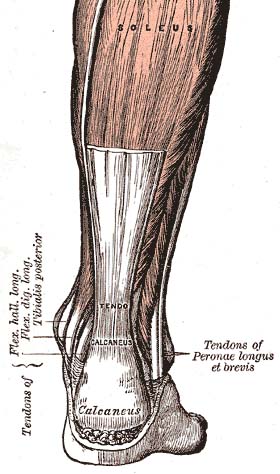 Initially, irritation of the outer covering of the tendon, called the paratenon, causes a paratendonitis. Paratendonitis is simply inflammation around the tendon. Inflammation of the tendocalcaneal bursa may also be present with paratendonitis. Either of these conditions may be due to repeated overuse or ill-fitting shoes that rub on the tendon or bursa.
Initially, irritation of the outer covering of the tendon, called the paratenon, causes a paratendonitis. Paratendonitis is simply inflammation around the tendon. Inflammation of the tendocalcaneal bursa may also be present with paratendonitis. Either of these conditions may be due to repeated overuse or ill-fitting shoes that rub on the tendon or bursa.
As we age, our tendons can degenerate. Wear and tear occurs in the tendon and weakens it. Degeneration usually appears as a loss of the normal tendon fiber arrangement. Tendons are made up of strands of a material called collagen. (The structure of a tendon is similar to a rope.) Some of the individual strands of the tendon can become jumbled due to the degeneration (Fig. 7), other fibers break, and the tendon loses strength.
The healing process thickens the tendon as scar tissue builds up. This can continue until nodules are formed within the tendon. This condition is called tendinosis. The weakened, degenerative tendon may lead to a rupture of the Achilles tendon.
This condition is called tendinosis. The weakened, degenerative tendon may lead to a rupture of the Achilles tendon.
Symptoms
Tendocalcaneal bursitis usually begins with pain and irritation at the back of the heel (Fig. 8). Redness and swelling may occur. The back of the shoe may further irritate the condition, making it difficult to tolerate shoe wear.
Achilles tendonitis usually occurs further up the leg, just above the heel bone itself (Fig. 8). The Achilles tendon may be noticeably thickened and tender to the touch. Pain may be present with walking, especially when pushing off on the toes.
An Achilles tendon rupture is usually an unmistakable event. A snapping noise may be heard when the Achilles tendon ruptures (Fig. 8). The rupture may feel similar to being kicked in the calf. Following rupture the calf may swell, and the injured person usually can’t rise on his toes.
Diagnosis
Diagnosis is made through physical examination and consideration of the patient’s medical history. If it is uncertain whether the Achilles tendon has been ruptured, an MRI (magnetic resonance imaging) scan may be necessary to confirm the diagnosis. The MRI machine uses magnetic waves rather than X-rays to show the soft tissues of the body. This machine creates images that look like slices of the area your doctor is interested in and shows the tendons and ligaments very clearly. This test does not require any needles or special dye and is painless.
Treatment
Conservative Treatment
Non-surgical treatment for tendocalcaneal bursitis and Achilles tendonitis usually starts with a combination of rest, anti-inflammatory medications such as aspirin or ibuprofen, and physical therapy. Several physical therapy treatments may be available in the early stages of Achilles tendonitis or tendocalcaneal bursitis.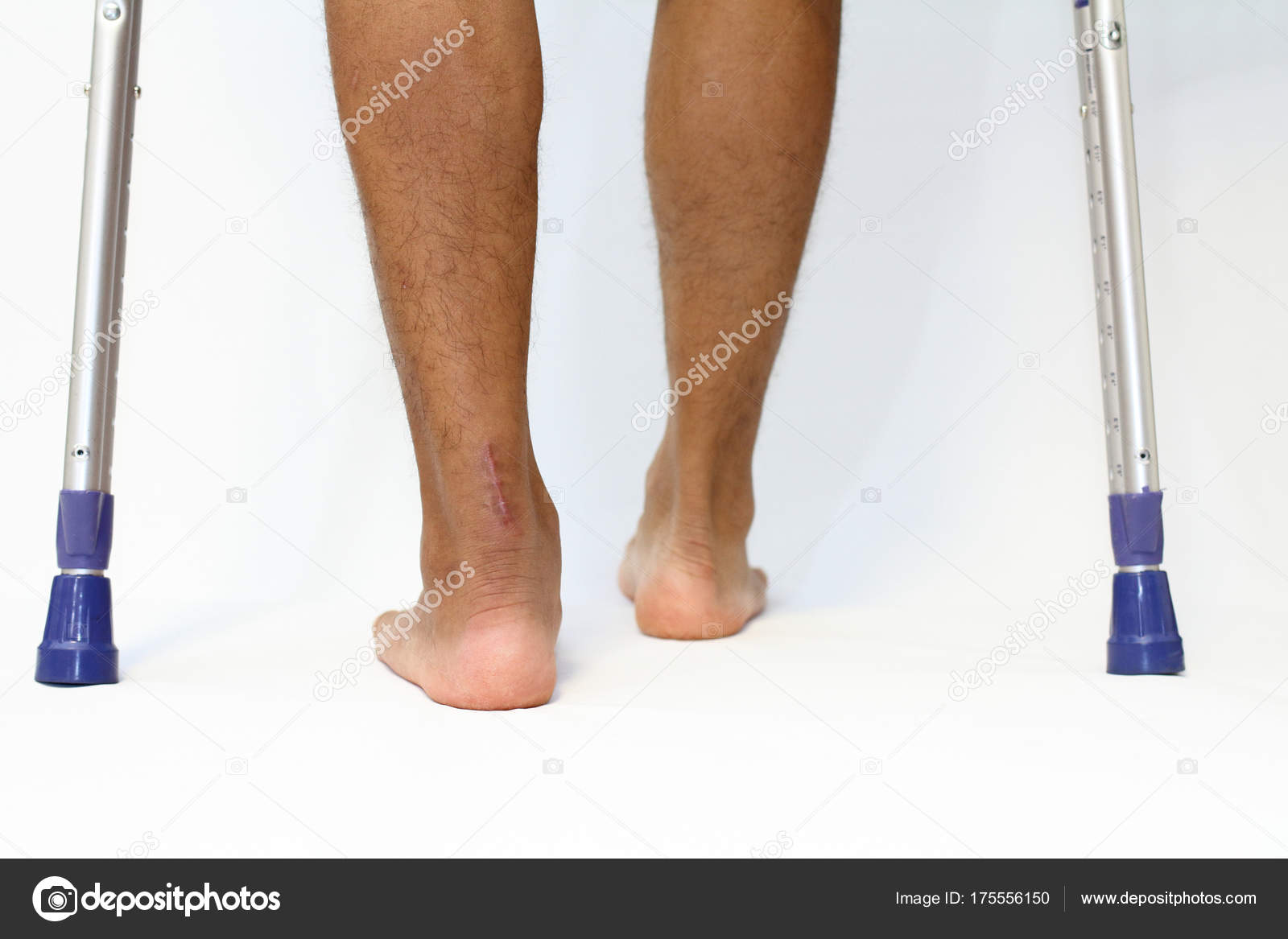
Ice
Ice can be used after tendocalcaneal bursitis, Achilles tendonitis and to calm an inflamed bursa. Initially, a patient should ice fifteen minutes every hour. A doctor may recommend a cold temperature whirlpool. The cold water helps reduce swelling and pain, and the moving water in the whirlpool provides a massage action. In supervised physical therapy, a therapist may continue treatments with ice bags, cold packs, or ice massages.
Rest
These types of injuries usually require rest. Activities like walking on the sore leg should be limited. Small (one-quarter inch) heel lifts can minimize stress by putting slack in the calf muscle and Achilles tendon. Similar sized heel lifts should be placed in both shoes to keep everything aligned.
A cortisone injection is not advised for tendocalcaneal bursitis and Achilles tendinitis. Following cortisone injections there is an increased risk of tendon rupture.
Following cortisone injections there is an increased risk of tendon rupture.
Treatment of an Achilles tendon rupture with a cast will allow the vast majority of tendon ruptures to heal. However, the incidence of re-rupture is increased in those patients treated with casting. In addition, the strength of the healed tendon is significantly less in patients treated with a cast.
Surgery
Surgical treatment for Achilles tendonitis is not usually necessary for most patients. However, in some cases of persistent tendonitis and tendinosis a procedure called debulking of the Achilles tendon may be performed.
This procedure is usually done through an incision on the back of the ankle near the Achilles tendon. The tendon is identified, and any inflamed paratenon tissue (the covering of the tendon) is removed. The tendon is then split, and the degenerative portion of the tendon is removed (Fig.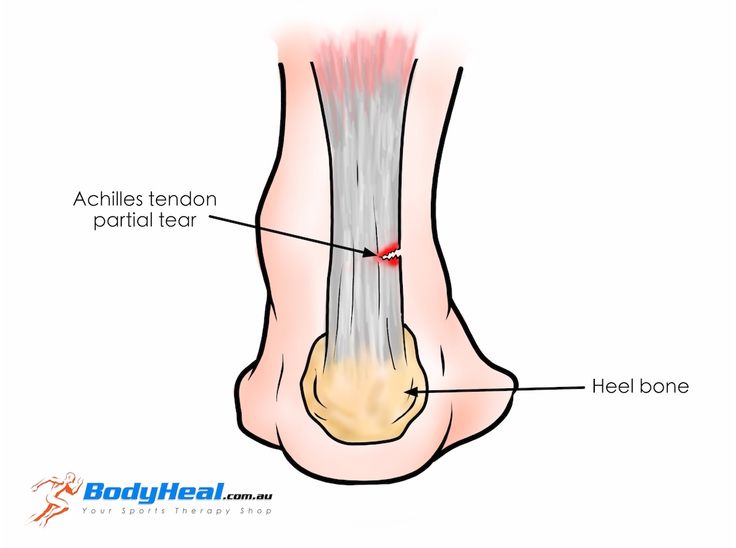 9). The split tendon is then repaired and allowed to heal. Removing the degenerative portion of the tendon stimulates repair of the tendon to a more normal state.
9). The split tendon is then repaired and allowed to heal. Removing the degenerative portion of the tendon stimulates repair of the tendon to a more normal state.
Surgery may also be suggested for treatment of a ruptured Achilles tendon. Re-attaching the two ends of the tendon repairs the torn Achilles tendon (Fig. 10). This procedure is usually done through an incision on the back of the ankle near the Achilles tendon. Numerous procedures have been developed to repair the tendon. Most procedures involve sewing the two ends of the tendon together. Repair techniques have been developed to minimize the size of the incision.
Rehabilitation
After surgery, a cast or brace will be used to protect the repair and the skin incision. The cast or brace may be required for six to eight weeks. Following removal of the cast, a shoe with a high heel may be worn for several weeks. Physical therapy may be recommended for regaining full motion of the ankle and strength in the calf muscles.
Physical therapy may be recommended for regaining full motion of the ankle and strength in the calf muscles.
Achilles tendon rupture (tear) | Southern Cross NZ
An Achilles tendon rupture injury is when the tendon fibres tear, causing pain and loss of function. A rupture can be either partial or complete. Treatment may involve surgery.
Achilles tendon rupture is common in weekend athletes trying to play/train too hard and is less common in well-trained professional athletes. The injury is more common in men than in women and the frequency of rupture increases over the age of 30 years.
Signs and symptoms
When the Achilles tendon ruptures a popping or snapping sound may be heard. The person may feel like they have been hit or kicked in the back of the lower leg. This is quickly followed by the sudden onset of sharp pain in the tendon and a loss of strength and function. If a complete rupture has occurred it may not be possible to lift the heel off the ground or point the toes.
Often the degree of pain experienced, or lack of it, can be inversely proportional to the extent of the injury, ie: a partial rupture may in fact be more painful than a complete rupture.
Causes
The Achilles tendon is a strong band of fibrous connective tissue that attaches the calf muscle to the heel bone. An Achilles tendon rupture usually involves a sudden, quick movement where there is a forceful stretch of the tendon or a contraction of the muscles, eg: jumping, sprinting, or pushing off. This occurs most often in sports that require a lot of stopping and starting such as tennis, basketball, netball, football and squash.
Most ruptures occur 3-6cm above where the tendon inserts into the heel bone, at the narrowest portion of the Achilles tendon.
Achilles tendon rupture is most common when the muscles and tendon have not been adequately stretched and warmed up prior to exercise, or when the muscles are fatigued.
Frequent episodes of Achilles tendonitis can weaken the tendon and make it more susceptible to rupture.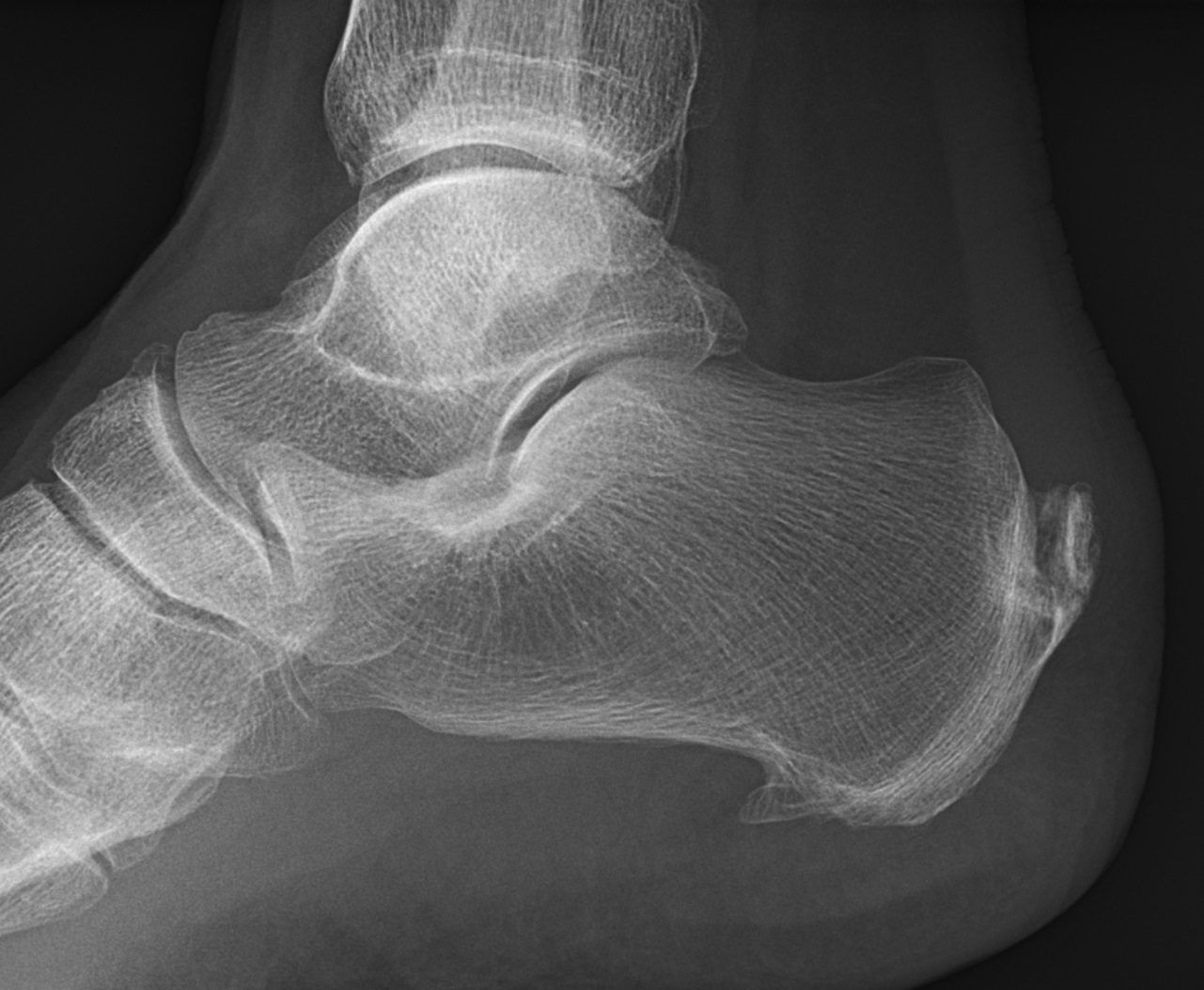
Other factors that may increase the risk of Achilles tendon rupture include:
- Being middle-aged and male
- Tight calf muscles and/or Achilles tendon
- Change in running surface, eg: from grass to concrete
- Inappropriate or poor quality footwear
- A change of footwear, eg: from heeled to flat shoes
- Obesity (excess weight puts more strain on the tendon)
- Certain medications – corticosteroid injections into an ankle joint and fluoroquinolone antibiotics.
It is thought that some medical conditions, such as gout, diabetes mellitus and systemic lupus erythematosus, may increase the risk of Achilles tendon rupture.
Diagnosis
If an Achilles tendon rupture is suspected, it is important to see a doctor straight away so that an accurate diagnosis can be made and appropriate treatment started. On your way to the doctor it is important to let the foot hang down with the toes pointed to the ground. This prevents the ends of the ruptured tendon pulling any farther apart.
This prevents the ends of the ruptured tendon pulling any farther apart.
The doctor will check for swelling, tenderness, and range of movement in the lower leg and foot. A noticeable gap may be felt in the tendon at the site of a complete rupture. This is most obvious just after the rupture has occurred and swelling will eventually make this gap difficult to feel.
A commonly used test to confirm an Achilles tendon rupture is the Thomson test. For this test, the patient lies face down on an examination table. The doctor then squeezes the calf muscles; an action that would normally cause the calf muscle to contract and the foot to point. When a partial rupture has occurred the foot’s ability to point may be decreased. When a complete rupture has occurred, the foot may not point at all.
Ultrasound scanning and MRI (magnetic resonance imaging) of the Achilles tendon may also be recommended to help determine the extent of the rupture.
Treatment
Once a diagnosis of Achilles tendon rupture has been confirmed, a referral to an specialist for treatment will be recommended.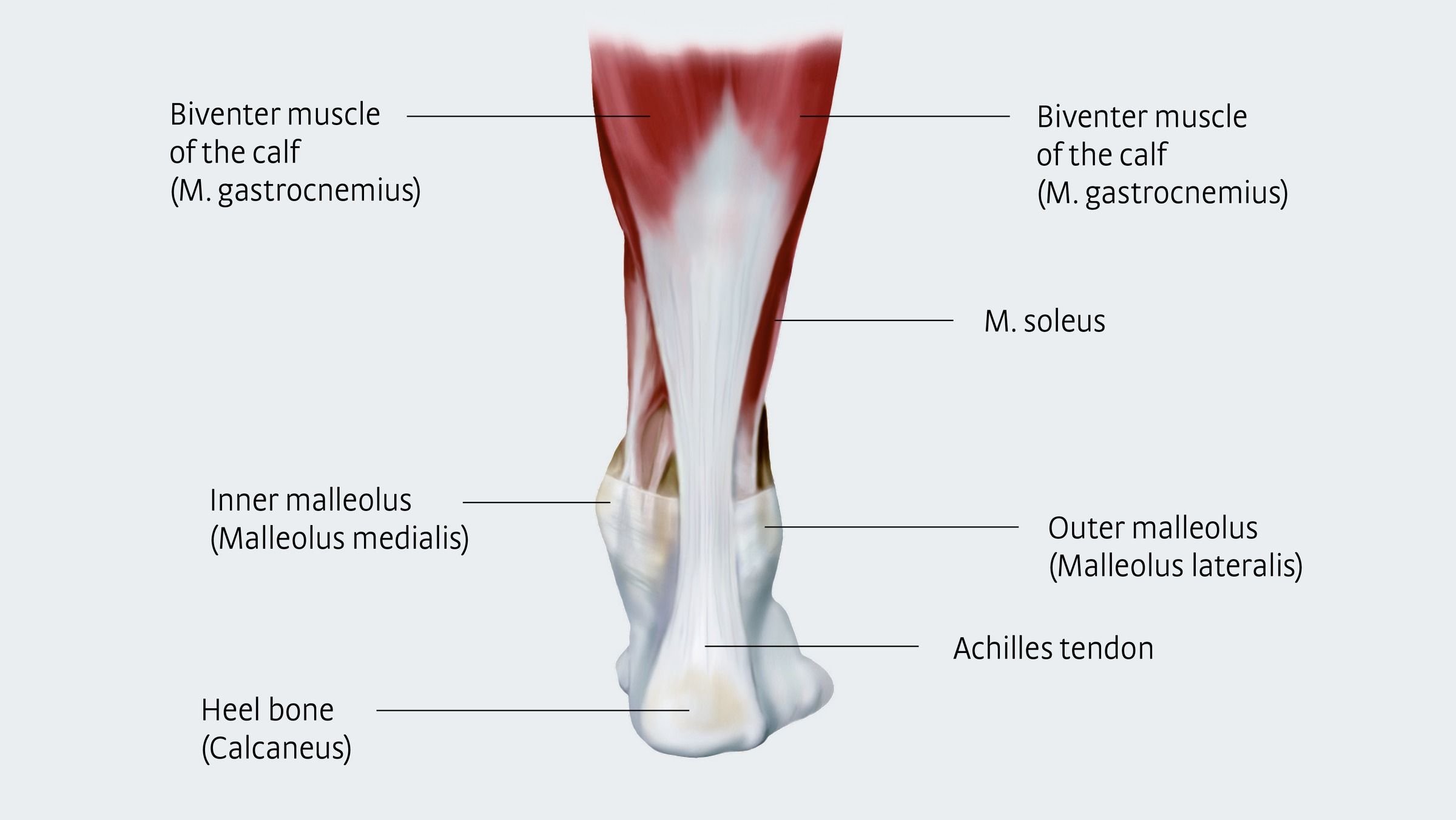
Treatment for an Achilles tendon rupture aims to help the torn ends of the tendon heal back together again. Treatment may be non-surgical or surgical. Factors such as the site and extent of the rupture, the time since the rupture occurred and the preferences of the specialist and patient will be considered when deciding which treatment will be undertaken. Some cases of rupture that have not responded well to non-surgical treatment may require surgery at a later stage.
Non-surgical treatment
The doctor will keep the foot from moving by fitting a cast or a special hinged splint (known as a “moon boot”) with the foot in a toes-pointed position, which brings the two ends of the torn tendon together allowing it to heal. The cast or splint will stay in place for 6-8 weeks. The cast will be checked and may be changed during this time.
Surgical treatment
The surgeon makes an incision in the skin over the ruptured portion of the tendon and joins the ends of the tendon together with strong stitches (sutures), allowing the tendon to closely approximate its previous length.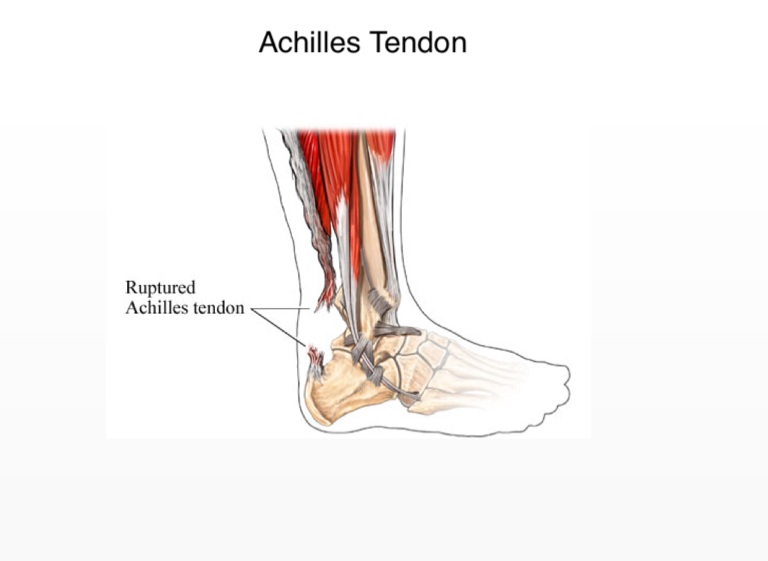 The skin is then closed with stitches and the foot is prevented from moving by putting it in a cast or splint, again in the toes-pointed position. Seven to ten days after surgery, the cast or splint is removed in order for the sutures in the skin to be removed. Another cast or splint will be applied and will stay in place a further 5-7 weeks.
The skin is then closed with stitches and the foot is prevented from moving by putting it in a cast or splint, again in the toes-pointed position. Seven to ten days after surgery, the cast or splint is removed in order for the sutures in the skin to be removed. Another cast or splint will be applied and will stay in place a further 5-7 weeks.
Many studies have been conducted as to the effectiveness of surgical versus non-surgical treatment. Surgical treatment has in the past been the most preferred form of treatment for Achilles tendon rupture, especially in cases of complete rupture. However, research indicates that surgical treatment does not necessarily produce a more effective outcome than non-surgical treatment.
Both types of treatment have advantages and disadvantages, which a patient should discuss with their specialist.
Recovery
While the cast or splint is in place it is important to regularly elevate and rest the foot. This will help to reduce swelling and promote healing.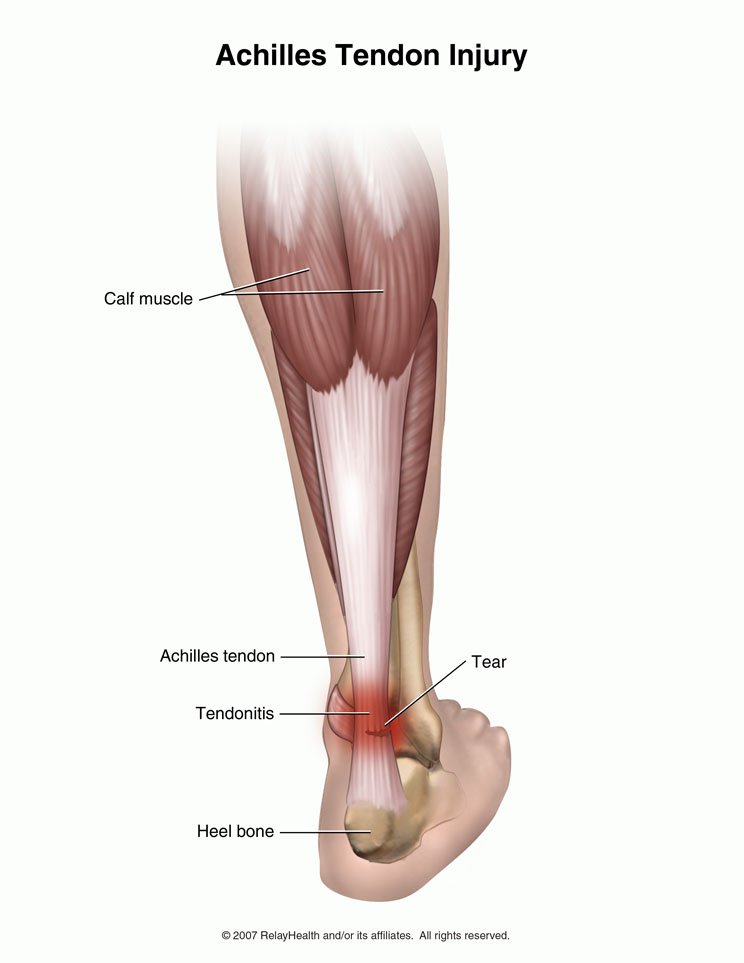 Crutches will need to be used and weight-bearing on the foot will be restricted.
Crutches will need to be used and weight-bearing on the foot will be restricted.
After removal of the cast or splint an individual rehabilitation plan, involving physiotherapy and specific exercises, will be commenced. The aim of rehabilitation is to restore the strength of the Achilles tendon and calf muscles and the range of motion of the ankle. It may be recommended that flat shoes are avoided and/or a heel raise is used in footwear. This helps to reduce the load put onto the Achilles tendon.
Physiotherapy may need to be continued for several weeks or months during which time activity is gradually increased. It may be six months to a year before the Achilles tendon is back to full strength.
Prevention
The following can significantly reduce the risk of Achilles tendon rupture:
- Adequate stretching and warming up prior to exercising
- If playing a seasonal sport, undertake preparatory exercises to build strength and endurance before the sporting season commences
- Maintain a healthy body weight.
 This will reduce the load on the tendon and muscles
This will reduce the load on the tendon and muscles - Use footwear appropriate for the sport or exercise being undertaken
- Exercise within fitness limits and follow a sensible exercise programme
- Increase exercise gradually and avoid unfamiliar strenuous exercise
- Gradual “warm down” after exercising
- Calf muscle stretching and strengthening exercises, which will allow the Achilles tendon to absorb greater forces and prevent injury.
References
Boggs, W. (2015). What’s the best postoperative management of acute Achilles tendon rupture (Web Page). Medscape News & Perspective. New York, NY: WebMD LLC. http://www.medscape.com/viewarticle/850222 [Accessed: 24/02/20]
Egger, A.C., Berkowitz, M.J. Achilles tendon injuries. Curr Rev Musculoskelet Med 2017;10(1):72-80
Mayo Clinic (2017). Achilles tendon rupture (Web Page). Rochester, MN: Mayo Foundation for Medical Education and Research. https://www.mayoclinic.org/diseases-conditions/achilles-tendon-rupture/symptoms-causes/syc-20353234?page=0&citems=10 [Accessed: 24/02/20]
https://www.mayoclinic.org/diseases-conditions/achilles-tendon-rupture/symptoms-causes/syc-20353234?page=0&citems=10 [Accessed: 24/02/20]
Saglimbeni, A.J. (2018). Achilles tendon injuries (Web Page). Medscape Drugs and Diseases. New York, NY: WebMD LLC. http://emedicine.medscape.com/article/309393-overview [Accessed: 24/02/20]
Last reviewed –March 2020
Achilles Tendon Injuries: Practice Essentials, Background, Anatomy
Albers D, Hoke B. Techniques in Achilles tendon rehabilitation. Tech Foot Ankle Surg. 2003. 2(3):208-19.
Asplund CA, Best TM. Achilles tendon disorders. BMJ. 2013 Mar 12. 346:f1262. [Medline].
Lopez RG, Jung HG. Achilles tendinosis: treatment options. Clin Orthop Surg. 2015 Mar. 7 (1):1-7. [Medline]. [Full Text].
Nilsson-Helander K, Silbernagel KG, Thomeé R, Faxén E, Olsson N, Eriksson BI, et al. Acute achilles tendon rupture: a randomized, controlled study comparing surgical and nonsurgical treatments using validated outcome measures. Am J Sports Med. 2010 Nov. 38(11):2186-93. [Medline].
Khan RJ, Fick D, Keogh A, Crawford J, Brammar T, Parker M. Treatment of acute achilles tendon ruptures. A meta-analysis of randomized, controlled trials. J Bone Joint Surg Am. 2005 Oct. 87(10):2202-10. [Medline].
Childress MA, Beutler A. Management of chronic tendon injuries. Am Fam Physician.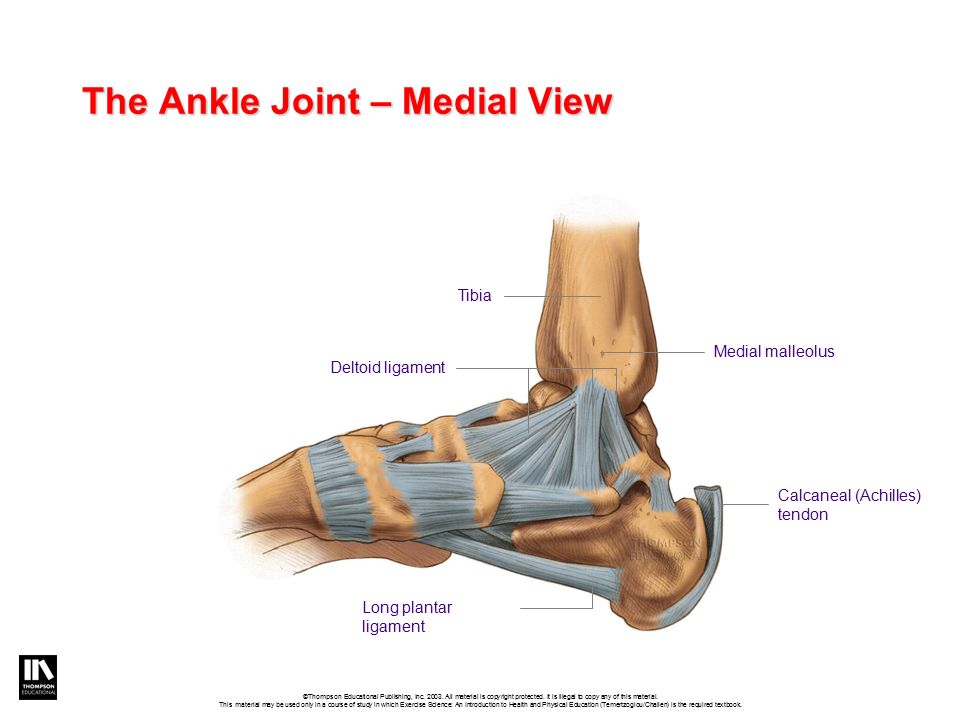 2013 Apr 1. 87(7):486-90. [Medline].
2013 Apr 1. 87(7):486-90. [Medline].
Wiegerinck JI, Kerkhoffs GM, van Sterkenburg MN, Sierevelt IN, van Dijk CN. Treatment for insertional Achilles tendinopathy: a systematic review. Knee Surg Sports Traumatol Arthrosc. 2013 Jun. 21(6):1345-55. [Medline].
Stevens M, Tan CW. Effectiveness of the Alfredson protocol compared with a lower repetition-volume protocol for midportion Achilles tendinopathy: a randomized controlled trial. J Orthop Sports Phys Ther. 2014 Feb. 44(2):59-67. [Medline].
Moore KL. Clinically Oriented Anatomy. 3rd ed. Philadelphia, Pa: Lippincott Williams & Wilkins; 1999.
Kader D, Saxena A, Movin T, Maffulli N. Achilles tendinopathy: some aspects of basic science and clinical management. Br J Sports Med.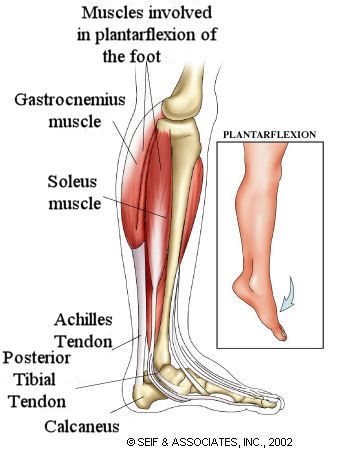 2002 Aug. 36(4):239-49. [Medline]. [Full Text].
2002 Aug. 36(4):239-49. [Medline]. [Full Text].
Aström M, Westlin N. Blood flow in chronic Achilles tendinopathy. Clin Orthop Relat Res. 1994 Nov. 166-72. [Medline].
Aström M, Westlin N. Blood flow in the human Achilles tendon assessed by laser Doppler flowmetry. J Orthop Res. 1994 Mar. 12(2):246-52. [Medline].
Carr AJ, Norris SH. The blood supply of the calcaneal tendon. J Bone Joint Surg Br. 1989 Jan. 71(1):100-1. [Medline].
Gaida J, Alfredson H, Forsgren S, Cook J. Decreased tumour necrosis factor alpha (tnf-a) in serum of patients with achilles tendinopathy: further evidence against the role of inflammation in the chronic stage. Br J Sports Med. 2014 Apr. 48(7):597. [Medline].
Saltzman C, Bonar S. Tendon problems of the foot and ankle. Lutter LD, Mizel MS, Pfeffer GB, eds. Orthopaedic Knowledge Update: Foot and Ankle. Rosemont, Ill: American Academy of Orthopaedic Surgeons; 1994. 236-73.
Wheaton MT, Molnar TJ. Overuse injuries of the lower extremities. Griffin, LY, ed. Orthopaedic Knowledge Update: Sports Medicine. Rosemont, Ill: American Academy of Orthopaedic Surgeons; 1994. 225-7.
De Jonge S, Warnaars JL, De Vos RJ, Weir A, van Schie HT, Bierma-Zeinstra SM, et al. Relationship between neovascularization and clinical severity in Achilles tendinopathy in 556 paired measurements. Scand J Med Sci Sports.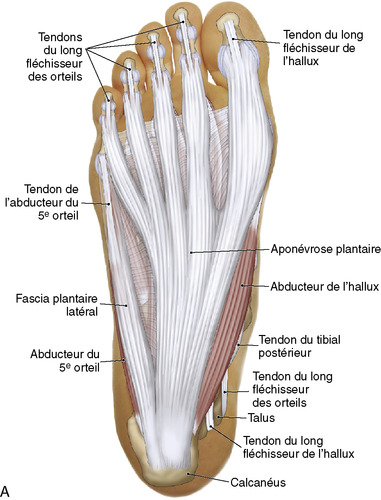 2013 Apr 22. [Medline].
2013 Apr 22. [Medline].
Schepsis AA, Jones H, Haas AL. Achilles tendon disorders in athletes. Am J Sports Med. 2002 Mar-Apr. 30(2):287-305. [Medline].
Kannus P, Józsa L. Histopathological changes preceding spontaneous rupture of a tendon. A controlled study of 891 patients. J Bone Joint Surg Am. 1991 Dec. 73(10):1507-25. [Medline].
Yuan J, Wang MX, Murrell GA. Cell death and tendinopathy. Clin Sports Med. 2003 Oct. 22(4):693-701. [Medline].
Józsa L, Kannus P. Histopathological findings in spontaneous tendon ruptures. Scand J Med Sci Sports. 1997 Apr. 7(2):113-8. [Medline].
Maffulli N, Barrass V, Ewen SW. Light microscopic histology of achilles tendon ruptures. A comparison with unruptured tendons. Am J Sports Med. 2000 Nov-Dec. 28(6):857-63. [Medline].
Am J Sports Med. 2000 Nov-Dec. 28(6):857-63. [Medline].
Zanetti M, Metzdorf A, Kundert HP, Zollinger H, Vienne P, Seifert B, et al. Achilles tendons: clinical relevance of neovascularization diagnosed with power Doppler US. Radiology. 2003 May. 227(2):556-60. [Medline].
Ohberg L, Alfredson H. Effects on neovascularisation behind the good results with eccentric training in chronic mid-portion Achilles tendinosis?. Knee Surg Sports Traumatol Arthrosc. 2004 Sep. 12(5):465-70. [Medline].
Alfredson H, Ohberg L, Forsgren S. Is vasculo-neural ingrowth the cause of pain in chronic Achilles tendinosis? An investigation using ultrasonography and colour Doppler, immunohistochemistry, and diagnostic injections. Knee Surg Sports Traumatol Arthrosc. 2003 Sep. 11(5):334-8. [Medline].
Harries M. Oxford textbook of Sports Medicine. 2nd ed. New York, NY: Oxford University Press; Chapt 4.4.3.
Maffulli N, Ewen SW, Waterston SW, Reaper J, Barrass V. Tenocytes from ruptured and tendinopathic achilles tendons produce greater quantities of type III collagen than tenocytes from normal achilles tendons. An in vitro model of human tendon healing. Am J Sports Med. 2000 Jul-Aug. 28(4):499-505. [Medline].
Whittaker P, Canham PB. Demonstration of quantitative fabric analysis of tendon collagen using two-dimensional polarized light microscopy.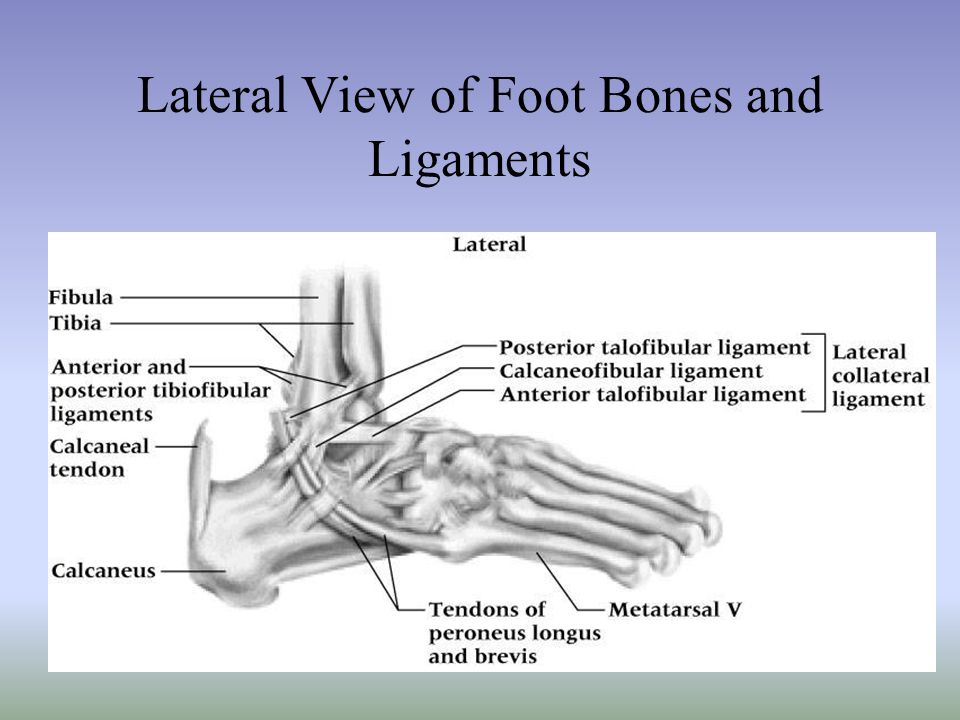 Matrix. 1991 Feb. 11(1):56-62. [Medline].
Matrix. 1991 Feb. 11(1):56-62. [Medline].
Kvist M. Achilles tendon injuries in athletes. Sports Med. 1994 Sep. 18(3):173-201. [Medline].
Scott RT, Hyer CF, Granata A. The correlation of Achilles tendinopathy and body mass index. Foot Ankle Spec. 2013 Aug. 6(4):283-5. [Medline].
Van Ginckel A, Thijs Y, Hesar NG, Mahieu N, De Clercq D, Roosen P, et al. Intrinsic gait-related risk factors for Achilles tendinopathy in novice runners: a prospective study. Gait Posture. 2009 Apr. 29(3):387-91. [Medline].
Hofmann GO, Weber T, Lob G. [Tendon rupture in chronic kidney insufficiency–“uremic tendonopathy”? A literature-supported documentation of 3 cases]. Chirurg. 1990 Jun. 61(6):434-7. [Medline].
Jozsa L, Balint JB, Kannus P, Reffy A, Barzo M. Distribution of blood groups in patients with tendon rupture. An analysis of 832 cases. J Bone Joint Surg Br. 1989 Mar. 71(2):272-4. [Medline].
Kujala UM, Järvinen M, Natri A, Lehto M, Nelimarkka O, Hurme M, et al. ABO blood groups and musculoskeletal injuries. Injury. 1992. 23(2):131-3. [Medline].
Kraemer R, Wuerfel W, Lorenzen J, Busche M, Vogt PM, Knobloch K. Analysis of hereditary and medical risk factors in Achilles tendinopathy and Achilles tendon ruptures: a matched pair analysis. Arch Orthop Trauma Surg. 2012 Jun. 132(6):847-53. [Medline].
Newnham DM, Douglas JG, Legge JS, Friend JA. Achilles tendon rupture: an underrated complication of corticosteroid treatment. Thorax. 1991 Nov. 46(11):853-4. [Medline]. [Full Text].
Malaguti M, Triolo L, Biagini M. Ciprofloxacin-associated Achilles tendon rupture in a hemodialysis patient. J Nephrol. 2001 Sep-Oct. 14(5):431-2. [Medline].
Harrell RM. Fluoroquinolone-induced tendinopathy: what do we know?. South Med J. 1999 Jun. 92(6):622-5. [Medline].
Diehl J. Platelet-rich plasma therapy in chronic Achilles tendinopathy. Tech Foot Ankle Surg. March 2011.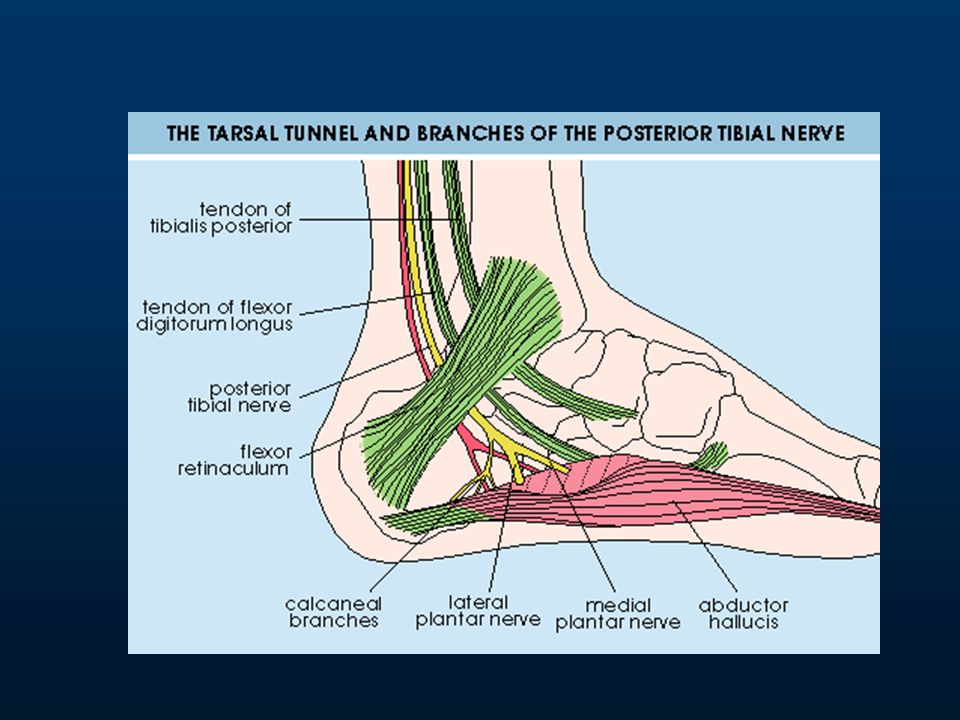 10(1):2-6.
10(1):2-6.
Malliou P, Rokka S, Beneka A, Gioftsidou A, Mavromoustakos S, Godolias G. Analysis of the chronic lower limb injuries occurrence in step aerobic instructors in relation to their working step class profile – A three year longitudinal prospective study. J Back Musculoskelet Rehabil. 2014 Feb 20. [Medline].
Maffulli N, Longo UG, Maffulli GD, Khanna A, Denaro V. Achilles tendon ruptures in elite athletes. Foot Ankle Int. 2011 Jan. 32(1):9-15. [Medline].
Arøen A, Helgø D, Granlund OG, Bahr R. Contralateral tendon rupture risk is increased in individuals with a previous Achilles tendon rupture. Scand J Med Sci Sports. 2004 Feb. 14(1):30-3. [Medline].
Almekinders LC, Weinhold PS, Maffulli N. Compression etiology in tendinopathy. Clin Sports Med. 2003 Oct. 22(4):703-10. [Medline].
Clin Sports Med. 2003 Oct. 22(4):703-10. [Medline].
Aström M. Partial rupture in chronic achilles tendinopathy. A retrospective analysis of 342 cases. Acta Orthop Scand. 1998 Aug. 69(4):404-7. [Medline].
Hutchison AM, Evans R, Bodger O, Pallister I, Topliss C, Williams P, et al. What is the best clinical test for Achilles tendinopathy?. Foot Ankle Surg. 2013 Jun. 19(2):112-7. [Medline].
de Jonge S, van den Berg C, de Vos RJ, van der Heide HJ, Weir A, Verhaar JA, et al. Incidence of midportion Achilles tendinopathy in the general population. Br J Sports Med. 2011 Oct. 45(13):1026-8. [Medline].
Saxena A, Ewen B, Maffulli N. Rehabilitation of the operated achilles tendon: parameters for predicting return to activity. J Foot Ankle Surg. 2011 Jan-Feb. 50(1):37-40. [Medline].
2011 Jan-Feb. 50(1):37-40. [Medline].
Westin O, Nilsson Helander K, Gravare Silbernagel K, Samuelsson K, Brorsson A, Karlsson J. Patients with an Achilles tendon re-rupture have long-term functional deficits in function and worse patient-reported outcome than primary ruptures. Knee Surg Sports Traumatol Arthrosc. 2018 Apr 24. [Medline].
Jildeh TR, Okoroha KR, Marshall NE, Abdul-Hak A, Zeni F, Moutzouros V. Infection and Rerupture After Surgical Repair of Achilles Tendons. Orthop J Sports Med. 2018 May. 6 (5):2325967118774302. [Medline]. [Full Text].
Tonarelli JM, Mabry LM, Ross MD. Diagnostic imaging of an Achilles tendon rupture. J Orthop Sports Phys Ther. 2011 Nov. 41(11):904. [Medline].
De Zordo T, Chhem R, Smekal V, Feuchtner G, Reindl M, Fink C, et al.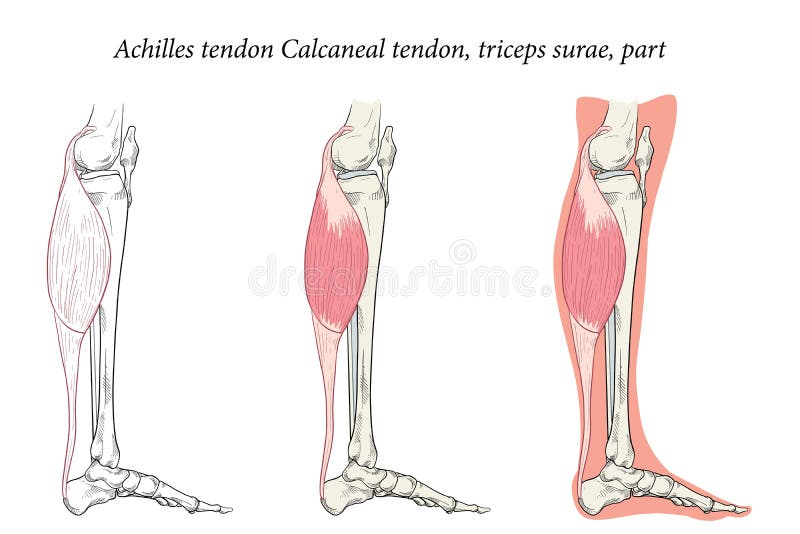 Real-time sonoelastography: findings in patients with symptomatic achilles tendons and comparison to healthy volunteers. Ultraschall Med. 2010 Aug. 31(4):394-400. [Medline].
Real-time sonoelastography: findings in patients with symptomatic achilles tendons and comparison to healthy volunteers. Ultraschall Med. 2010 Aug. 31(4):394-400. [Medline].
Juras V, Zbyn S, Pressl C, Domayer SE, Hofstaetter JG, Mayerhoefer ME, et al. Sodium MR Imaging of Achilles Tendinopathy at 7 T: Preliminary Results. Radiology. 2012 Jan. 262(1):199-205. [Medline].
McCormack R, Bovard J. Early functional rehabilitation or cast immobilisation for the postoperative management of acute Achilles tendon rupture? A systematic review and meta-analysis of randomised controlled trials. Br J Sports Med. 2015 Oct. 49 (20):1329-35. [Medline].
Grigg NL, Stevenson NJ, Wearing SC, et al. Incidental walking activity is sufficient to induce time-dependent conditioning of the Achilles tendon. Gait Posture. 2009 Oct 5. [Medline].
Henriksen M, Aaboe J, Bliddal H, et al. Biomechanical characteristics of the eccentric Achilles tendon exercise. J Biomech. 2009 Sep 21. [Medline].
Gardin A, Movin T, Svensson L, et al. The long-term clinical and MRI results following eccentric calf muscle training in chronic Achilles tendinosis. Skeletal Radiol. 2009 Sep 23. [Medline].
Hawkins D, Lum C, Gaydos D, et al. Dynamic creep and pre-conditioning of the Achilles tendon in-vivo. J Biomech. 2009 Sep 15. [Medline].
Maempel JF, Clement ND, Wickramasinghe NR, Duckworth AD, Keating JF. Operative repair of acute Achilles tendon rupture does not give superior patient-reported outcomes to nonoperative management. Bone Joint J. 2020 Jul. 102-B (7):933-40. [Medline].
Ecker TM, Bremer AK, Krause FG, Muller T, Weber M. Prospective Use of a Standardized Nonoperative Early Weightbearing Protocol for Achilles Tendon Rupture: 17 Years of Experience. Am J Sports Med. 2016 Apr. 44 (4):1004-10. [Medline].
Cohen RS, Balcom TA. Current treatment options for ankle injuries: lateral ankle sprain, Achilles tendonitis, and Achilles rupture. Curr Sports Med Rep. 2003 Oct. 2(5):251-4. [Medline].
Alfredson H, Pietilä T, Jonsson P, Lorentzon R. Heavy-load eccentric calf muscle training for the treatment of chronic Achilles tendinosis. Am J Sports Med. 1998 May-Jun. 26(3):360-6. [Medline].
Rees JD, Lichtwark GA, Wolman RL, Wilson AM. The mechanism for efficacy of eccentric loading in Achilles tendon injury; an in vivo study in humans. Rheumatology (Oxford). 2008 Oct. 47(10):1493-7. [Medline].
Reese RC Jr, Burruss TP, Patten J. Athletic training techniques and protective equipment. Nicholas JA, Hershman EB, eds. The Lower Extremity & Spine in Sports Medicine. 2nd ed. St Louis, Mo: Mosby; 1995. 267-75.
Marsolais D, Côté CH, Frenette J. Nonsteroidal anti-inflammatory drug reduces neutrophil and macrophage accumulation but does not improve tendon regeneration. Lab Invest. 2003 Jul. 83(7):991-9. [Medline].
Ohberg L, Alfredson H. Ultrasound guided sclerosis of neovessels in painful chronic Achilles tendinosis: pilot study of a new treatment. Br J Sports Med. 2002 Jun. 36(3):173-5; discussion 176-7. [Medline]. [Full Text].
Clementson M, Lorén I, Dahlberg L, Aström M. Sclerosing injections in midportion Achilles tendinopathy: a retrospective study of 25 patients. Knee Surg Sports Traumatol Arthrosc. 2008 Sep. 16(9):887-90. [Medline].
de Jonge S, de Vos RJ, Weir A, van Schie HT, Bierma-Zeinstra SM, Verhaar JA, et al. One-year follow-up of platelet-rich plasma treatment in chronic Achilles tendinopathy: a double-blind randomized placebo-controlled trial. Am J Sports Med. 2011 Aug. 39(8):1623-9. [Medline].
Mautner K, Colberg RE, Malanga G, Borg-Stein JP, Harmon KG, Dharamsi AS, et al. Outcomes after ultrasound-guided platelet-rich plasma injections for chronic tendinopathy: a multicenter, retrospective review. PM R. 2013 Mar. 5(3):169-75. [Medline].
Di Matteo B, Filardo G, Kon E, Marcacci M. Platelet-rich plasma: evidence for the treatment of patellar and Achilles tendinopathy–a systematic review. Musculoskelet Surg. 2015 Apr. 99 (1):1-9. [Medline].
Paoloni JA, Appleyard RC, Nelson J, Murrell GA. Topical glyceryl trinitrate treatment of chronic noninsertional achilles tendinopathy. A randomized, double-blind, placebo-controlled trial. J Bone Joint Surg Am. 2004 May. 86-A(5):916-22. [Medline].
Fox A, Murrell G. Nitric oxide and tendon healing. Tech Orthoped. 2007. 22(1):14-9.
Al-Abbad H, Simon JV. The effectiveness of extracorporeal shock wave therapy on chronic achilles tendinopathy: a systematic review. Foot Ankle Int. 2013 Jan. 34(1):33-41. [Medline].
Rompe JD, Furia J, Maffulli N. Eccentric loading versus eccentric loading plus shock-wave treatment for midportion achilles tendinopathy: a randomized controlled trial. Am J Sports Med. 2009 Mar. 37(3):463-70. [Medline].
McLaughian GJ, Handol HG. Interventions for treating acute and chronic Achilles tendinitis. (Cochrane review). The Cochrane Library,. Chichester, UK: John Wiley and Sons; Issue 1:
Brosseau L, Casimiro L, Milne S, Robinson V, Shea B, Tugwell P, et al. Deep transverse friction massage for treating tendinitis. Cochrane Database Syst Rev. 2002. CD003528. [Medline].
Zhang BM, Zhong LW, Xu SW, Jiang HR, Shen J. Acupuncture for chronic Achilles tendnopathy: a randomized controlled study. Chin J Integr Med. 2013 Dec. 19(12):900-4. [Medline].
Wegrzyn J, Luciani JF, Philippot R, et al. Chronic Achilles tendon rupture reconstruction using a modified flexor hallucis longus transfer. Int Orthop. 2009 Aug 21. [Medline].
Metz R, Verleisdonk EJ, van der Heijden GJ, Clevers GJ, Hammacher ER, Verhofstad MH, et al. Acute Achilles tendon rupture: minimally invasive surgery versus nonoperative treatment with immediate full weightbearing–a randomized controlled trial. Am J Sports Med. 2008 Sep. 36(9):1688-94. [Medline].
Twaddle BC, Poon P. Early motion for Achilles tendon ruptures: is surgery important? A randomized, prospective study. Am J Sports Med. 2007 Dec. 35(12):2033-8. [Medline].
Keller A, Ortiz C, Wagner E, Wagner P, Mococain P. Mini-Open Tenorrhaphy of Acute Achilles Tendon Ruptures: Medium-Term Follow-up of 100 Cases. Am J Sports Med. 2014 Mar. 42(3):731-6. [Medline].
Wilkins R, Bisson LJ. Operative versus nonoperative management of acute Achilles tendon ruptures: a quantitative systematic review of randomized controlled trials. Am J Sports Med. 2012 Sep. 40(9):2154-60. [Medline].
Erickson BJ, Mascarenhas R, Saltzman BM, et al. Is Operative Treatment of Achilles Tendon Ruptures Superior to Nonoperative Treatment?: A Systematic Review of Overlapping Meta-analyses. Orthop J Sports Med. 2015 Apr. 3 (4):2325967115579188. [Medline]. [Full Text].
Amendola A. Outcomes of open surgery versus nonoperative management of acute achilles tendon rupture. Clin J Sport Med. 2014 Jan. 24(1):90-1. [Medline].
DeLee JC, Drez D Jr, Miller MD, eds. Orthopaedic Sports Medicine. 2nd ed. Philadelphia, Pa: WB Saunders; 2003.
Pajala A, Kangas J, Siira P, Ohtonen P, Leppilahti J. Augmented compared with nonaugmented surgical repair of a fresh total Achilles tendon rupture. A prospective randomized study. J Bone Joint Surg Am. 2009 May. 91(5):1092-100. [Medline].
Rahm S, Spross C, Gerber F, Farshad M, Buck FM, Espinosa N. Operative treatment of chronic irreparable Achilles tendon ruptures with large flexor hallucis longus tendon transfers. Foot Ankle Int. 2013 Aug. 34(8):1100-10. [Medline].
Silbernagel KG, Nilsson-Helander K, Thomee R, et al. A new measurement of heel-rise endurance with the ability to detect functional deficits in patients with Achilles tendon rupture. Knee Surg Sports Traumatol Arthrosc. 2009 Aug 19. [Medline].
Maquirriain J, Kokalj A. Acute Achilles tendinopathy: effect of pain control on leg stiffness. J Musculoskelet Neuronal Interact. 2014 Mar. 14(1):131-6. [Medline].
Achilles Tendon Rupture | TopDog Health
What Is It?
An Achilles tendon rupture is also known as the gastrocnemius tendon’s rupture or the common calcanean tendon. The tendon is actually composed of 5 different tendons, the two most important being the superficial digital flexor and gastrocnemius tendons. The gastrocnemius tendon is the largest of these and is the most powerful extensor of the hock (ankle) joint. Both the superficial digital flexor and gastrocnemius tendons attach to the heel bone, called the calcaneus bone. A rupture of the Achilles tendon may be a partial tear, which means just the gastrocnemius is torn, or a complete tear, in which all five tendons have been torn.
RETURN TO TOP
Who Gets It?
Dogs affected by this are primarily from the large sporting and working breeds and are usually 5 years of age and older. The Doberman pinscher and Labrador retrievers seem to be overrepresented in this condition, but it can occur in any dog or cat, no matter what age or breed.
RETURN TO TOP
What Are The Signs?
With a partial rupture, the gastrocnemius tendon is torn, but the superficial digital flexor tendon is still intact. Animals with a partial rupture will have a dropped hock (ankle), be lame in the affected leg, and stand with curled toes.
Dogs that have a complete rupture (where all five tendons of the Achilles tendon are torn) will have a completely dropped hock, causing them to walking flat-footed rather than on his “tippy toes” like normal, and will show signs of lameness.
Pain and edema (swelling) will follow the injury. Eventually, the gastrocnemius muscle will contract, and the area between the bone and the tendon fills with fibrous tissue.
RETURN TO TOP
How Is It Diagnosed?
Rupture of the Achilles tendon in dogs can usually be diagnosed based on clinical signs and a physical exam performed by your veterinarian. Radiographs may also be used, and ultrasounds can help distinguish between partial and complete tears.
RETURN TO TOP
Why Did This Happen To My Dog?
An Achilles tendon rupture can be caused by a sudden traumatic event such as a fall or anything that causes a sudden and extreme flexion of the hock (aka the ankle joint). Rupture may occur over time due to extreme overstretching and overuse, causing the tendon to deteriorate and eventually tear. Lacerations are the most likely cause of a complete tear, such as when a sharp edge comes into contact with the tendon.
RETURN TO TOP
How Is It Treated?
Because the muscle contracts when the tendon is ruptured, it results in permanent deformity. Therefore, medical management using a cast or splint will not work, and the injury must be repaired surgically.
The surgical procedure involves removing the tendon’s damaged portions so that the ruptured ends can be reattached together. To reattach the gastrocnemius tendon to the heel bone, bone tunnels are drilled, and special non-absorbable sutures are passed through the tunnels and into the gastrocnemius tendon. If the superficial digital flexor tendon is also ruptured, the ruptured portions are stitched back to one another using heavy suture material in a special suture pattern (locking loop) that pulls the torn tendon ends back together.
After the tendon(s) have been repaired, the patient must keep the ankle (hock) in extension for a period of two months, so that the surgery does not fail.
The hock will be stabilized during this time using one of four methods: placement of a screw through the tibia and heel bone with the hock in extension, with a cast usually also applied to the limb; placement of an external skeletal fixator which consists of a series of pins that penetrate the bone and are fixed together with external bars; placement of a circular fixator ring with wires; placement of a cast. After two months, the method of stabilization of the hock is removed.
RETURN TO TOP
What Is the Prognosis For My Dog?
The long-term prognosis for dogs that have surgery to repair an Achilles tendon rupture is generally very good. The sooner the rupture is repaired, the better the results will be. If the tear goes without repair for too long, scar tissue formation will make the surgery more difficult and possibly less successful. Additionally, if the dog walks plantigrade (flat-footed like a human with toes and ankle on the ground) for an extended period of time, further damage can occur and make surgery more difficult.
It is also important to note that there is significant aftercare involved with this surgery due to the placement of a cast, possible external fixators or screws, and strict exercise restrictions and rest. Total recovery takes about 8-10 weeks. The outcome of the surgery also depends on the aftercare of the patient.
Recovery from an Achilles’ tendon rupture is possible for your dog – the key is to act fast. If you take it upon yourself to get educated about your dog’s injury and what you can do to help with their recovery, your dog will do amazing and can go back to being their happy, healthy self.
RETURN TO TOP
Subscribe To Our Newsletter
Achilles Tendon Rupture – Core EM
Background
Definition: Tear of the Achilles Tendon, most frequently 4-6 cm above calcaneal tendon insertion
Achilles Tendon Anatomy (specialtyorthony.com)
Anatomy
- The Achilles tendon is the largest tendon in the body
- It is formed by the convergence of the soleus muscle tendon and medial and lateral gastrocnemius tendons (see figure 1 above)
- This tendon receives blood supply from posterior tibial artery
- Rupture usually occurs 4-6 cm above the calcaneal insertion in hypovascular region or “watershed/critical” zone
Mechanism
- ~80% of these injuries occur as a traumatic injury during a sporting event (Leppilahti 1998)
- May occur with
- Sudden forced plantar flexion
- Extreme dorsiflexion in a plantar flexed foot
Epidemiology
- Often misdiagnosed as an ankle sprain, and may be missed in up to 25% of cases
- Incidence 18-29:100,000 per year, and is rising (Chiodo 2006, Sheth 2017)
- Risk factors:
- Flouroquinolone antibiotics (particularly when used concomitantly with systemic steroids)
- Steroid injections
- Chronic inflammatory conditions (SLE, rheumatoid arthritis)
- Episodic athletes, also known as “weekend warriors”
- Most commonly in men aged 40-50 (Sheth 2017)
References
Sheth U et al. The epidemiology and trends in management of acute Achilles tendon ruptures in Ontario, Canada: a population-based study of 27,607 patients. Bone Joint J. 2017; 99-B(1): 78-86. PMID: 28053261
Chiodo CP, Wilson MG. Current Concepts Review: Acute Ruptures of the Achilles Tendon. Foot Ankle Int 2006; 27(4): 305-13. PMID: 16624224
Leppilahti J, Orava S. Total Achilles tendon rupture. A review. Sports Med. 1998; 25(2): 79-100. PMID: 9519398
Kayser R et al. Partial rupture of the proximal Achilles tendon: a differential diagnostic problem in ultrasound imaging. Br J Sports Med. 2005; 39(11): 838-42. PMID: 16244194
Margetic P et al. Comparison of ultrasonographic and intraoperative findings in Achilles tendon rupture. Coll Antropol. 2007; 31:279-284. PMID: 17598414
Garras DN et al. MRI is Unnecessary for Diagnosing Acute Achilles Tendon Ruptures: Clinical Diagnostic Criteria. Clin Orthop Relat Res 2012; 470(8): 2268-2273. PMID: 22538958
Willits K et al. Operative versus nonoperative treatment of acute Achilles tendon ruptures: a multicenter randomized trial using accelerated functional rehabilitation .J Bone Joint Surg Am. 2010; 92(17): 2767-75. PMID: 21037028
Wallace RG et al. The non-operative functional management of patients with a rupture of the tendo Achillis leads to low rates of re-rupture. J Bone Joint Surg Br 2011; 93(10):1362-6. PMID: 21969435
Erickson BJ. Is Operative Treatment of Achilles Tendon Ruptures Superior to Nonoperative Treatment? Orthop J Sports Med. 2015; 3(4): PMID: 26665055
Achilles Tendon Injuries – North Georgia Veterinary Specialists | North Georgia Veterinary Specialists
What is the Achilles Tendon?
The Achilles tendon (also called common calcaneal tendon) is a tough band of fibrous tissue that is the aggregate of those structures to the heel bone or calcaneus. It is made up of tendons from five muscles of the hindlimb. These are the superficial digital flexor tendon, the gastrocnemius tendon, and combined tendon of the gracilis, semitendinosus, and biceps femoris muscles.
How Does the Achilles Tendon get injured?
Achilles tendon injuries can occur from an acute traumatic episode such as as a fall, lacerations, severe acute stretching or pulling, blunt force trauma, or penetrating wound, or from chronic repetitive injuries that are not severe enough to cause acute injuries, or that causes chronic stretching and deterioration of the tendon.
Achilles tendon injuries be classified in a variety of ways. They can be complete ruptures involving all components of the Achilles tendon, or partial ruptures in which some parts or components of the tendon, usually the superficial digital tendon with or without the combined tendon of the gracilis, semitendinosus, and biceps femoris muscles, are still intact. Classification based on the location of the Achilles tendon injury along the tendon length results in tendon avulsion injuries occurring close to or at its insertion on the calcaneus which is the most common form seen, musculotendinous injuries occurring at the musculotendinous junction, and finally, tendon injuries occurring in the substance of the tendon, which is the least common. Classification of Achilles tendon injuries according to chronicity of the injury results in acute injuries that are less than 48 hours old, subacute injuries, that are 2 to 21 days old, and chronic injuries that are over 3 weeks old.
What are the signs of Achilles Tendon Injuries?
Signs of Achilles tendon injuries include varying degrees of lameness. Mild strains may result only in lameness, pain, and swelling. As the injury worsens, the heel of the injured limb appears progressively dropped when weight-bearing, and some may walk completely flat foot if the rupture is complete. These occur concurrently with an extended stifle. When the superficial digital tendon is intact, the toes can be curled downward in a crab claw stance that appears like the pet is trying to grip the floor. This is because the full weight and strain of weight bearing is applied on the superficial digital flexor tendon, which subsequently pulls the digits into flexion.
Operation for rupture of the Achilles tendon in Krasnoyarsk
Achilles tendon rupture – injury to athletes. It occurs most often due to a strong jump or while running. When injured, severe pain, swelling of the limb and loss of functionality occurs.
In such a situation, medical assistance should be provided to the athlete immediately (within 24 hours). A minimally invasive technique is being performed.
Causes of tendon rupture
The Achilles tendon is located in the back of the lower leg, attaches to the heel bone and participates in flexion of the foot at the ankle joint.The tendon was formed for upright walking, without it a person would not be able to maintain an upright position of the body and walk on their feet. Despite its strength, the tendon is considered one of the most traumatic places in the lower leg.
In everyday life, a rupture can happen when sliding off steps, falling on a leg with an outstretched toe, bouncing on an extended leg, when the muscles of the lower leg are sharply contracted. Achilles tendon injuries are prone to those who neglect to warm up, immediately moving on to heavy loads on the muscles.
Treatment methods
The conservative method involves the complete immobilization of the limb in order to self-fuse the tendon. This method can only be suitable for those who themselves give up physical activity and an active lifestyle (often these are elderly people who move only within the apartment or in the area around the house). In other cases, it is shown to carry out the operation. The sooner the better.
The disadvantage of the conservative method is that the tendon may not heal even after prolonged immobilization.In other cases, the healed tendon itself loses strength due to scar changes, resulting in repeated ruptures that require only surgical treatment. Only surgery will allow the leg to return to its previous mobility.
Indications for surgical treatment
The effect of stitching on the first day will be the best, but if this is not possible, the operation should be performed at least within the first week after injury.The longer the injured person waits for time, the further the ends of the tendon diverge under the action of the contractions of the lower leg muscles. In addition, the ends of the “Achilles” are exposed to crushing, resembling loose rags, which will not match, and will not grow together quickly and correctly.
The patient has the following complaints:
achilles tendon pain
discomfort, gait disturbance
clap while jumping, running
swelling, edema, sinking on palpation.
How is the Achilles tendon open suture operation performed?
Once the patient is admitted to the hospital, they are examined by a surgeon and anesthesiologist. Special splints are prepared, which immobilize the injured lower limb along its front part in the position of plantar flexion of the foot and the knee joint.
Achilles tendon surgery is performed under general anesthesia, local anesthesia, and spinal anesthesia.In this operation, a long incision is not necessary; access is made through an incision about two centimeters long above the rupture zone. The torn tendon is fixed to the calcaneus with special absorbable materials.
Contraindications for Achilles tendon surgery
poor general well-being of the patient
decompensated pathology of internal organs
severe bleeding disorders
unsatisfactory condition of the shin tissues, which prevents adequate regeneration of postoperative sutures
local infection of the skin and subcutaneous layer
How is the recovery period going?
It is no longer possible to fully regain the strength of the tendon after the operation.Therefore, a repeated rupture can occur even with seemingly small loads. Complications may include infection, skin necrosis, severe scarring, limited mobility, and cosmetic defect.
Rehabilitation takes a long time. At this time, the patient moves with crutches. A patient after surgery on the Achilles tendon should be observed in the hospital for several days, and then can go home. Recovery after surgical treatment of Achilles ruptures lasts an average of 2.5 months.You can return to sports no earlier than six months later.
In addition to physical rehabilitation, physiotherapy is carried out aimed at eliminating postoperative edema, improving trophism and restoring muscle function. Massage, magnetotherapy, UHF, electromyostimulation can be used.
Suture at rupture of the Achilles tendon in Krasnoyarsk
Undergo research and emergency surgery at the Medunion Clinic. We do not have queues and long waiting times for results.To sign up, call +7 391 202-95-54 or fill out the online form. Indicate the procedure you need and leave your details – our specialist will call you back and discuss a convenient time for the procedure.
Partial rupture of the Achilles tendon / Chronic tenosynovitis / Tendinosis / Achilles – Dr. Erich H. Rembeck, MD
Many patients with long-term Achilles tendon pain report the frequency of these pains.Often, complaints arise against the background of some predisposing condition, which is the cause of acute pain in the Achilles tendon. Such pains disappear over time and regular sports activities or participation in sports competitions become possible again.
After a while, however, the pain in the tendon area recurs. After stopping sports, the pain symptoms disappear for a short time and participation in sports activities becomes possible again. This constantly changing condition can last for years, but the intervals between the condition and relief and periods of exacerbation become shorter over time.This often leads to the fact that light jogging or even long and sometimes short walking walks cause severe pain. In this case, the main cause of damage to the ligaments is their constantly occurring rupture, which leads to the progressive formation of scar tissue inside the tendons. This is due to an incomplete healing process or the occurrence of a new injury. Due to this, the blood supply to the tendons worsens, which increases during exertion and the increase in the volume of the connection between the muscle-tendons of the joint, caused by the blood supply, is disturbed.
At a late stage of the disease, an additional change in the tendon sheath occurs, which is characterized by the gradually advancing immobility of the tendon sheath. In this case, the increase in the volume of the connection between the muscle-tendons of the joint under load is disrupted or completely disappears.
Depending on the degree of the disease, conservative (non-operative) methods of treatment are sometimes still possible. In the later stages of the disease, when even light running is impossible, one has to resort to an operative method of treatment.
Surgical treatment for rupture of the Achilles tendon in Krasnoyarsk
* if necessary, reconstruction and restoration of the entire musculo-tendon apparatus
** including the cost of anesthesia
Danilov Alexey Vitalievich
Trained at the Krasnoyarsk State Medical Academy from 1999 to 2005. He is proficient in all modern surgical and conservative methods of fracture treatment.
He studied at the Krasnoyarsk State Medical Academy from 1999 to 2005. He is proficient in all modern surgical and conservative methods of fracture treatment. Surgical methods: intramedullary osteosynthesis, bone osteosynthesis, compression-distraction osteosynthesis according to Ilizarov. conservative methods: closed reduction, immobilization with plaster casts,
conservative treatment of fractures in a plaster cast or immobilization using modern materials (polyurethane bandages, “plastic plaster”).
Danilov Alexey Vitalievich:
I have experience in the treatment of the following fractures:
– fractures of the clavicle
– fractures of the shoulder
– fractures of the olecranon
– fractures of the forearm
– fractures of the metacarpal bones,
phalanges of fingers
– fractures of the patella (kneecap)
– fractures of the ankles
– fractures of the calcaneus, tarsal bones, metatarsal bones of the foot.
Performs operations to restore the integrity of the injured tendons, including the rupture of the Achilles tendon, operations to restore the integrity of the muscles after their traumatic separation
Fluent in written and spoken English, including in highly specialized topics (medicine, scientific articles, etc.)etc.).
Despite the fact that the Achilles tendon is the strongest tendon in the human body, in medical practice, various kinds of injuries to this ligament are quite common. Sprains, tears and ruptures of this tendon are much more common in people who occasionally play sports than in those who do it regularly or do not do it at all. Tendon rupture is a rather serious injury, and in most cases it occurs as a result of a sharp dorsiflexion of the foot, a direct blow to the tendon area when it is taut, a sharp contraction of the lower leg muscles from an extended leg position, a fall on the leg with an extended toe, or a sharp blow on it. subject.At the moment of rupture, a person feels a sharp pain; within an hour after the injury, edema forms on the back of the ankle joint. When the Achilles tendon is torn, the foot sags, and its flexion is very difficult or becomes completely impossible. In such cases, a person needs urgent help from a trauma specialist.
When treating a patient with pain in the ankle joint, the doctor, after a visual examination of the leg, issues a referral for ultrasound and / or MRI to obtain the most detailed information about the state of all articular tissues.Based on the information received, the doctor can accurately determine the nature and extent of the damage and prescribe the necessary treatment. When the Achilles tendon ruptures, the only way to repair it is surgery.
The Achilles tendon restoration procedure is performed under anesthesia (the type of anesthesia is determined by the doctor). After disinfecting the ankle, the doctor makes an incision in the skin over the tendon, exposes the ends of the tendon and very sparingly refreshes them by cutting off a small part.After that, the doctor sutures the tendon with a special needle and nylon, nylon or silk suture material. If, in addition to the rupture of the Achilles tendon, there are damage to other soft tissues, then the specialist will reconstruct and restore the entire musculo-tendon apparatus. After completing all the restorative manipulations on the ankle joint, the doctor sutures the incision and applies a plaster cast, which the patient will have to wear for 1-2 months.
The recovery period of the strength of the Achilles tendon largely depends on the individual characteristics of the organism and on the patient himself – how strictly he will follow the doctor’s recommendations.For the period of postoperative rehabilitation, the doctor prescribes physiotherapy for the patient, and after removing the plaster cast – and physiotherapy exercises. Usually, 2 months after the operation, a person can already move independently, the discomfort and pain when walking gradually becomes weaker, and over time it disappears altogether. The mobility of the ankle joint is fully restored and the person can again lead an active lifestyle.
The doctors of the Medistar clinic are highly qualified and have vast experience in the restoration of both soft and bone tissues, so they successfully carry out even complex surgical operations.The use of modern imported materials and drugs, as well as the use of advanced methods during treatment, allows minimizing any undesirable phenomenon and making the postoperative recovery period as short and painless as possible.
Elimination of rupture, inflammation of the Achilles tendon
The Achilles tendon, which is located on the back of the lower leg and is attached to the heel bone, is most often injured due to abrupt, fast movements or excessive unbalanced loads on the lower limbs.As a rule, novice athletes load themselves with intensive training, if safety conditions for their own health are not met, and in other situations, for example, with muscle fatigue, experienced jumpers, runners, tennis players, basketball players, and skiers.
The rupture occurs at the narrowest and weakest point of the tendon, 3–6 centimeters above the heel attachment. At the moment of rupture, a characteristic click is heard. Having received such an injury, a person experiences acute pain and can no longer move normally.In some cases, there is no force even to lift the leg off the ground or move the toes – usually this indicates a complete rupture of the tendon.
The most effective way out of the situation is an operation, with the help of which the integrity of the tendon will be restored, and with them motor functions. With a high level of surgical treatment after surgery, it is quite possible to return to professional sports, of which there are many examples, even with repeated breaks.
In our clinic, operations are carried out by leading operating doctors orthopedic traumatologists – Evgeny Ivanovich Belousov and Viktor Mikhailovich Bykov, Candidate of Medical Sciences, specialists, each of whom has at least 20 years of experience.
Urgent visit to a doctor and diagnostics
It is important to seek professional medical help in the first hours after an injury – you can get a consultation with an orthopedic surgeon in our clinic without queues, simply by calling the call center number.
At the reception, the specialist will collect anamnesis and conduct an examination to clarify the presence of edema, check the sensitivity of the limb. There are a number of special manipulations – tests – during which the doctor will check the reaction of the calf muscles and feet.
For additional hardware diagnostics, ultrasound, electroneuromyography, laboratory tests, and so on are used. All these areas are successfully working in our clinic.
Effective surgery
Non-surgical treatment eliminates surgical risks, but does not protect against recurrence. And even if conservative measures are enough at the initial stage of treatment, it is often necessary to resort to surgery later. Much depends on the individual anatomical characteristics of the patient, and there is no way to deduce a suitable rule for everyone – the attending physician makes the final decision on the method of therapy, based on the diagnostics performed and taking into account the stage and complexity of the disease.
Despite the ongoing controversy surrounding the topic of torn Achilles treatment, most orthopedists still prefer surgical treatment, which consists of suturing the tendon open or closed, depending on which is more rational to use in a particular case. In our clinic, the operation is carried out on modern expert-class equipment, accompanied by safe anesthesia, which is provided by experienced doctors, anesthesiologists and resuscitators.
After the intervention, plaster is most often applied to the problem area to immobilize the healing zone. At first, up to two weeks, you will have to walk with a crutch, and after initial rehabilitation, you will have to go through a full recovery program, which the doctor will select especially for you. It can last for six months or longer – the quality and speed of your recovery will depend both on your work to restore the tendon, and on how closely you follow the surgeon’s recommendations.
An appointment for a consultation with an operating doctor orthopedist-traumatologist is carried out at the number: + 7 (812) 671-01-70.
Achilles tendon rupture
Achilles tendon rupture is a rupture of tendon fibers causing pain and loss of function. Tendon rupture is treated promptly.
Achilles tendon rupture is common in beginner athletes trying to play / train too hard, and less common in well-trained professional athletes.Trauma is more common in men than women, and the frequency of rupture increases with age 30.
Signs and symptoms
A clicking sound may be heard when the Achilles tendon ruptures. The person may feel like they have been hit on the back of the lower leg. This is accompanied by the sudden onset of acute pain in the tendon and loss of strength and function. If there is a complete rupture, it may not be possible to lift the heel off the ground or act with your toes. Often, the degree of pain experienced, or lack thereof, can be inversely proportional to the degree of injury, meaning that a partial tear may be more painful than a complete tear.
Reasons
The Achilles tendon is a powerful bundle of fibrous connective tissue that attaches the calf muscle to the heel bone. When the muscle contracts, the tendon pulls on the heel, causing the leg to move.
Achilles tendon rupture occurs if the load applied to it is greater than the tendon’s ability to withstand this load. This usually occurs as a result of sudden, rapid movement, when a strong stretching of a tendon or muscle contraction occurs, such as jumping, sprinting, or pushing off.This happens most often in sports that require a lot of abrupt starts and stops (acceleration-deceleration), such as tennis, basketball.
Achilles tendon averages 15 cm in length. Most tears occur 3-6 cm higher where the tendon attaches to the heel bone. This is the narrowest part of the Achilles tendon.
Achilles tendon rupture is most common when muscles and tendons have not been properly stretched and warmed up prior to training, or when the muscles are tired.The Achilles tendon has poor blood supply, making it susceptible to injury and slow to heal after injury. During exercise, the amount of blood that can enter the tendon decreases, further increasing the risk of rupture.
Most experts agree that there are no warning signs of an impending rift. However, frequent episodes of the Achilles tendon (tendon inflammation) can weaken the tendon and make it more prone to rupture.
Other factors that can increase your risk of ruptured Achilles tendon include:
- Being middle-aged and male
- Dense calf muscles and / or Achilles tendon
- Changing the running surface, e.g. from grass to concrete
- Wrong or bad shoes
- Change of shoes, for example: from heels to flat shoes.
Certain medical conditions, such as gout, tuberculosis, and systemic lupus erythematosus, are thought to increase the risk of Achilles tendon rupture.
Diagnostics
If an Achilles tendon rupture is suspected, it is important to see a doctor immediately to make an accurate diagnosis and recommend appropriate treatment. Before consulting a doctor, it is important that the leg hangs down and the toes point towards the ground . This prevents the ends of the torn tendon from stretching.
The doctor will review the entire medical history, including any previous injuries to the Achilles tendon and what actions were taken at the time the actual injury occurred.
The doctor will also perform a physical exam and check for swelling, tenderness, and range of motion in the lower leg and foot. A noticeable tear may be felt in the tendon at the site of the complete rupture. This is most obvious immediately after the tear has occurred, and the swelling will eventually make it difficult to feel the tear.
One of the tests commonly used to confirm ruptured Achilles tendon is the Thomson test. For this test, the patient lies face down on the examination table. The doctor then contracts the calf muscles; an action that usually causes the foot to be extended like a ballerina (plantar flexion). When a partial rupture has occurred, the leg’s ability to point may be impaired. When a complete rupture has occurred, the foot may not respond at all.
Ultrasound scans and MRI (magnetic resonance imaging) of the Achilles tendon may also be recommended to determine the extent of rupture.
Treatment
After confirmation of the diagnosis of Achilles tendon rupture, referral to an orthopedic specialist for treatment is recommended.
Treatment can be non-surgical (conservative) or surgical. Factors such as the location and extent of the rupture, the time elapsed since the rupture, and the specialist’s and patient’s preferences will be considered when deciding what treatment to take. In some cases of rupture that does not respond well to nonsurgical treatment, surgery may be required at a later stage.
Many studies have been conducted regarding the effectiveness of each treatment. Surgical treatment was in the past the most preferred form of treatment for ruptured Achilles tendon and was most commonly used in cases of complete rupture. Recent research, however, suggests that surgical treatment does not necessarily lead to a better outcome than non-surgical treatment.
Both types of treatment have advantages and disadvantages. For example, the likelihood of re-rupture may be lower with surgical treatment, while non-surgical treatment avoids the risks associated with surgery, which include wound infection, nerve damage, and risks associated with the use of a general anesthetic.Therefore, it is important to discuss the advantages and disadvantages of each treatment option with a specialist and get a clear explanation of why a particular treatment was recommended.
Recovery
While immobilization is in use, it is important not to step on the foot and keep it in an elevated position while resting. This will help reduce swelling and promote healing. You need to use crutches or a cane.
After removing the immobilization, an individual rehabilitation plan begins, including physiotherapy and special exercises.The goal of rehabilitation is to restore the strength of the Achilles tendon and calf muscles and the range of motion of the ankle joint. It may be advisable to avoid flat shoes and / or raise the heel in the shoe. This helps relieve stress on the Achilles tendon.
It may take six months to a year for the Achilles tendon to return to full strength. During this time, it is very important to follow the instructions of the specialist and physical therapist to prevent further damage to the Achilles tendon.
Recent studies show that earlier and more intensive rehabilitation after surgery results in greater patient satisfaction and improved physical function without increasing the risk of re-rupture.
Prevention
The following can significantly reduce the risk of Achilles tendon rupture:
- Adequate stretching and warming up before training
- If you are involved in seasonal sports, do preparatory exercises to build strength and endurance before preparing for the sports season.
- Maintain a healthy body weight. This will reduce the stress on the tendons and muscles
- Use footwear suitable for sports or activities
- Train Within Fitness and Follow a Reasonable Exercise Program
- Increase exercise intensity gradually and avoid unfamiliar exercises
- Gradual cooling down after training
- Stretching and strengthening the calf muscles that will allow the Achilles tendon to absorb greater forces and prevent injury.
OLD RUPTURES OF ACHILLES TENDON – HOW TO TREAT THEM AND IS SPONTANEOUS FUSION POSSIBLE? RESULTS OF SHORTING TENOPLASTY | Sereda
1. Suchak A. A., Bostick G., Reid D., Blitz S., Jomha N. The incidence of achilles tendon ruptures in edmonton, canada. Foot Ankle Int. 2005; 26 (11): 932-936. DOI: 10.1177 / 107110070502601106.
2.Leppilahti J., Puranen J., Orava S. Incidence of achilles tendon rupture. Acta Orthop Scand. 1996; 67 (3): 277-279.
3. Leppilahti J. Achilles tendon rupture, with special reference to epidemiology and results of surgery. Thesis, university of Oulu. Oulu, Finland, 1996.
4. Carden D. G., Noble J., Chalmers J., Lunn P., Ellis J. Rupture of the calcaneal tendon.The early and late management. J Bone Joint Surg Br. 1987; 69 (3): 416-420.
5. Maffulli N., Waterston S. W., Squair J., Reaper J., Douglas A. S. Changing incidence of achilles tendon rupture in Scotland: a 15-year study. Clin J Sport Med. 1999; 9 (3): 157-160.)
6. Sereda A.P. Surgical treatment of ruptures of the Achilles tendon [dis. ….. Dr. med. sciences]. M .; 2015.324 s.
7. Hattrup S.J., Johnson K.A. A Review of ruptures of the achilles tendon. Foot Ankle. 1985; 6: 34-38.
8. Stein S.R., Luekens C.A. Jr. Closed treatment of achilles tendon ruptures. Orthop Clin North Am. 1976; 7 (1): 241-246.
9.Stein S.R., Luekens C.A. Methods and rationale for closed treatment of achilles tendon ruptures. Am J Sports Med. 1976; 4 (4): 162-169. DOI: 10.1177 / 036354657600400407.
10. Maffulli N., Via A. G., Oliva F. Chronic achilles tendon rupture. Open Orthop J. 2017; 11: 660-669. DOI: 10.2174 / 1874325001711010660.
11. Maffulli N. The clinical diagnosis of subcutaneous tear of the achilles tendon.a prospective study in 174 patients. Am J Sports Med. 1998; 26 (2): 266-270.
12. Steginsky B.D., Van Dyke B., Berlet G.C. The missed achilles tear: now what? Foot Ankle Clin. 2017; 22 (4): 715-734. DOI: 10.1016 / j.fcl.2017.07.004.
13. Inglis A.E., Scott W.M., Sculco T.P., Patterson A.K. Ruptures of the tendon achilles. an objective assesment of surgical and non-surgical treatment.J Bone Joint Surg Am. 1976; 58 (7): 990-993.
14. Mironova Z.S., Cherkasova T.I., Arkhipov S.V. Long-term results of surgical treatment of subcutaneous rupture of the Achilles tendon. Bulletin of Surgery named after I.I. Grekov. 1984; 132 (3): 117-118.
15. Maffulli N., Ajis A. Current concepts review: management of chronic ruptures of the achilles tendon.J Bone Joint Surg Am. 2008; 90 (6): 1348-1360. DOI: 10.2106 / jBjS.g.01241.
16.lea R.B., Smith l. Rupture of achillis tendon: nonsurgical treatment. Clin Orthop Relat Res. 1968; 60: 115-118.
17.lea R.B., Smith l. Non-surgical treatment of tendo achillis rupture. J Bone Joint Surg Am. 1972; 54 (7): 1398-1407.
18.Gillies H., Chalmers J. The management of fresh ruptures of the tendo achillis. J Bone Joint Surg Am. 1970; 52 (2): 337-343.
19. Lindholdt T., Munch-Jorgensen T. conservative treatment of achilles tendon rupture. a follow-up study of 14 cases. Acta Orthop Scand. 1976; 47 (4): 454-458.
20. Nistor l. Surgical and non-surgical treatment of achilles tendon rupture: a prospective randomized study.J Bone Joint Surg Am. 1981; 63 (3): 394-399.
21. Jacobs D., Martens M., Van Andekercke R., Mulier J. C., Mulier F. Comparison of conservative and operative treatment of achilles tendon rupture. Am J Sports Med. 1978; 6 (3): 107-111. DOI: 10.1177 / 036354657800600302.
22. Garden D. G., Noble J., Chalmers J., Lunn P., Ellis J. Rupture of the calcaneal tendon (the early and late management).J Bone Joint Surg Br. 1987; 69 (3): 416-420.
23. Häggmark T., Liedberg H., Eriksson E., Wredmark T. Calf muscle atrophy and muscle function after non-operative vs operative treatment of achilles tendon ruptures. Orthopedics. 1986; 9 (2): 160-164.
24. Häggmark T., Eriksson E., Jansson E. Muscle fiber type changes in human skeletal muscle after injuries and immobilization.Orthopedics. 1986 Feb; 9 (2): 181-185.
25. Inglis A.E., Sculco T.P. Surgical repair of ruptures of the tendo achillis. Clin Orthop Relat Res. 1981; (156): 160-169.
26. Fruensgaard S., Helmig P., Riis J., Stovring J.O. conservative treatment for acute rupture of the achilles tendon. Int Orthop. 1992; 16 (1): 33-35.
27.Kouvalchouk J. F., Rodineau J., Watin Augouard L. [Ruptures of the achilles tendon. comparison of the results of surgical and nonsurgical treatment]. Rev Chir Orthop Reparatrice Appar Mot. 1984; 70 (6): 473-478. (in French).
28. Scott W.N., Inglis A.E., Sculco T.P. Surgical treatment of reruptures of the tendo achilles following non surgical treatment. Clin Orthop Relat Res. 1979; (140): 175-177.
29.Williams P.E. Effect of intermitten stretch on immobilized muscle. Ann Rheum Dis. 1988; 47 (12): 1014-1016.
30. Li A.D., Lyskovets-Chernetskaya L.E. About the diagnosis and treatment of injuries of the Achilles tendon. Bulletin of Surgery named after I.I. Grekov. 1961; 87 (9): 88-92.
31. Tkachenko S.S., Lyskovets-Chernetskaya L.Ye. Treatment of injuries of the Achilles tendon.Surgery. Journal them. N.I. Pirogov. 1974; (11): 43-48.
32. Mattila V.M., Huttunen T.T., Haapasalo H., Sillanpää P., Malmivaara A., Pihlajamäki H. Declining incidence of surgery for achilles tendon rupture follows publication of major RcTs: evidence-influenced change evident using the Finnish registry study. Br J Sports Med. 2015; 49 (16): 1084-1086. DOI: 10.1136 / bjsports-2013-092756.
33.Maffulli N., Almekinders L.C. The achilles Tendon (kindle edition). london: Springer-Verlag; 2007.284 p.
34. Trachuk A.P. Treatment of patients with closed injuries of the Achilles tendon with a removable percutaneous suture [dis. … Cand. honey. sciences]. SPb .; 1995.217 s.
35. Gritsyuk A.A., Sereda A.P. Achilles tendon. M .: Raen, 2010.313 p.
36. Koryshkov N.A., Platonov S.M., Larionov S.V., Matveeva N.Yu., Koryshkova L.V. Treatment of chronic damage to the calcaneal (Achilles) tendon. Traumatology and Orthopedics of Russia. 2012; (2): 34-40. DOI: 10.21823 / 2311-2905-2012-2-34-40.
37. Rodomanova L.A., Kochish A.Yu., Romanov D.V., Valetova S.V. A method for the surgical treatment of patients with repeated ruptures of the Achilles tendon.Traumatology and Orthopedics of Russia. 2010; (3): 126130. DOI: 10.21823 / 2311-2905-2010-0-3-126-130.
38. Chugaev D.V., Konovalchuk N.S., Sorokin E.P., Kogan P.G., Goodz A.I., Lasunsky S.A., Stafeev D.V. Our approach to the surgical treatment of chronic Achilles tendon injuries. is there a simple solution? Traumatology and Orthopedics of Russia. 2018; (1): 36-45. DOI: 10.21823 / 2311-2905-2018-24-1-44-52.
39.Buda R., Castagnini F., Pagliazzi G., Giannini S. Treatment algorithm for chronic achilles tendon lesions: review of the literature and proposal of a new classification. J Am Podiatr Med Assoc. 2017; 107 (2): 144-149. DOI: 10.7547 / 15-099.
40. Efimenko N.A., Gritsyuk A.A., Sereda A.P. Diagnosis of ruptures of the Achilles tendon. Clinical medicine. 2011; (3): 64-70.
41.Sereda A.P., Anisimov E.A. Infectious complications after surgical treatment of sports injuries of the Achilles tendon. Emergency medicine. 2015; (4) 90-97.
42. Leslie H.D., Edwards W.H. Neglected ruptures of the achilles tendon. Foot Ankle Clin. 2005; 10 (2): 357-370.
43. Myerson M.S. Achilles tendon ruptures. Instr Course Lect.1999; 48: 219-230.
44. Platt H. Observation of some tendon repairs. Br Med J. 1931; (1): 611-615.
45. Arner O., Lindholm E., Orell S.R. Histologic changes in subcutaneous rupture of the achilles tendon; a study of 74 cases. Acta Chir Scand. 1959; 116 (5-6): 484-490.
46.Kissel C.G., Blacklidge D.K., Crowley D.L. Repair of neglected achilles tendon ruptures – procedure and functional results. J Foot Ankle Surg. 1994; 33 (1): 46-52.
47. Rush J.H. Operative repair of neglected rupture of the tendo achillis. Aust N Z J Surg. 1980; 50 (4): 420-422.
48. Bosworth D.M. Repair of defects in the tendo achillis.J Bone Joint Surg Am. 1956; 38 (1): 111-114.
49. Yasuda T., Kinoshita M., Okuda R. Reconstruction of chronic achilles tendon rupture with the use of interposed tissue between the stumps. Am J Sports Med. 2007; 35 (4): 582-588. DOI: 10.1177 / 0363546506295939.
50. Yasuda T., Shima H., Mori K., Kizawa M., Neo M. Direct repair of chronic achilles tendon ruptures using scar tissue located between the tendon stumps.J Bone Joint Surg Am. 2016; 98 (14): 1168-1175. DOI: 10.2106 / jBjS.15.00865.
51. Chida S., Suzuki H., Kobayashi M., Sakuraba T., Kura H., Miyakoshi N., Shimada Y. Reconstruction of a chronically ruptured achilles tendon using an internal brace: a case report. J Med Case Rep. 2018; 12 (1): 54. DOI: 10.1186 / s13256-018-1610-6.
52. Leppilahti J., Forsman K., Puranen J., Orava S. Outcome and prognostic factors of achilles rupture repair using a new scoring method. Clin Orthop Relat Res. 1998; (346): 152-161.
53. Efimenko N.A., Gritsyuk A.A., Gavryushenko N.S., Sereda A.P., Kuleshov D.N. Optimal suture of the Achilles tendon (clinical and experimental study). Moscow surgical journal. 2011; (3): 44-50.
90,000 9 most common sports injuries of the lower extremities.
In many sports, the legs are the most stressed.
There are over a hundred different sports injuries, and many of them involve lower limb injuries. Here are nine of the most common ones.
Damage to the Achilles tendon.
This tendon, starting from the muscles of the lower leg and attaching to the back of the heel bone, is not for nothing named after the ancient Greek hero Achilles, whose weak point, according to legend, was the heel. The Achilles tendon is the most powerful in the human body, it can withstand loads of up to 350 kilograms.Nevertheless, among athletes, it is the most traumatic.
In severe trauma, a complete rupture of the tendon can occur, but acute tendinitis, an inflammation that occurs as a result of constant overuse, is more common. If left untreated, acute Achilles tendon tendonitis can become chronic over time. Disturbed by constant pain that does not go away even after a long rest. Most often, this damage occurs in athletes who are involved in running and jumping, hockey.
Prevention and treatment.
Pre-workout stretches and calf-strengthening exercises can help prevent damage to the Achilles tendon.
The main therapeutic measures: rest, cold, elevated position of the leg, anti-inflammatory drugs, physiotherapy exercises, strengthening the muscles of the lower leg. It is categorically impossible to do sports until complete healing occurs.
Stretching of the muscles and ligaments of the groin.
Sprains of the adductor muscles of the inner surface of the upper thigh are common among sports injuries.They bring their legs together. Trauma usually results from a sudden change in direction while driving. She is often found in hockey, football, basketball, volleyball. On the inner side of the thigh, pain, swelling occurs, and sometimes subcutaneous hemorrhage.
Prevention and treatment.
The best prevention (as with other sports injuries) is stretching, which should always be done with basic exercises. You cannot immediately put a heavy load on your legs – you need to build it up gradually.
The injured leg is provided with peace, an elevated position is given, cold is applied, and anti-inflammatory drugs are used.You will have to forget about physical activity for at least two weeks. After that, you can begin to stretch and do exercises to strengthen the adductors of the thigh.
Sprain of the ankle ligaments.
It is found among football players, hockey players, basketball players, volleyball players. This injury is almost inevitable in sports that involve running, jumping and fast turns. Stretching of the ligaments occurs with excessive and inaccurate twisting, turning the foot inward. After the movement that caused the injury, there is a sharp pain, swelling in the ankle joint, a sharp restriction of movement, hemorrhage may appear under the skin.Sometimes, with a large traumatic force, a rupture of the ankle ligaments occurs. In order to make sure that there is no fracture, X-rays are prescribed to the victims.
Prevention and treatment.
There are special exercises to strengthen the ankle ligaments. As a preventive measure, taping of the ankle is used (strengthening with a special plaster), wearing the right shoes. But even these measures cannot 100% insure against injury during a fall or awkward movement.
The injured leg is provided with rest, an elevated position, cold is applied, elastic bandages are applied.On the second day, they begin to perform various movements in the ankle joint to improve blood flow, accelerate the resorption of edema and healing.
Medial tibial stress syndrome.
This is one of the most common causes of leg pain in athletes. The syndrome is a reaction to repetitive high loads and trauma, in the form of periostitis (inflammation of the periosteum) and deformity of the tibia. It manifests itself in the form of pain along the inner surface of the lower leg during physical exertion.
Prevention and treatment.
The best preventive measures to prevent medial tibial stress syndrome are comfortable shoes, gradual exercise and good stretching. Treatment, as with most sports injuries, is cold, rest, and anti-inflammatory drugs.
Runner’s knee.
Knee injuries account for approximately 55% of all sports injuries and 25% of all other injuries experienced by trauma surgeons. “Runner’s knee” is a condition in which the friction of the patella against the thigh bone increases, its ligaments become irritated, arthrosis (degenerative changes in the joint), arthritis (inflammation) develop.
In addition to runners, the disease is common among cyclists, swimmers, football players, basketball players, volleyball players, hockey players, and those involved in step aerobics.
Prevention and treatment.
Wearing comfortable shoes and using orthopedic insoles helps prevent runner’s knee. It is better to go jogging on tracks with a soft shock-absorbing surface. If you have to work out on hard surfaces, then you need to do strength exercises to strengthen the quadriceps muscles of the thigh and take long breaks between workouts.
The main symptom is pain in the knee joint. If it occurs, you will have to stop training for at least two days. In the future, you need to warm up well before running, and then apply cold to the knee.
Injuries to the knee menisci.
Knee menisci are cartilage pads that sit inside the knee joint to provide stability and cushioning. Injuries to the knee menisci are different: from a slight tear to complete crushing, they can occur with a sharp turn of the lower leg inward or outward, hyperextension in the joint, impact on a hard surface or on an acute angle.
Prevention and treatment.
With a slight tear of the meniscus, surgery can usually be dispensed with. More serious injuries require surgery (which is most often performed arthroscopically). The length of treatment and rehabilitation depends on the severity of the injury.
To prevent damage to the knee menisci, you need to play sports only in comfortable shoes, use special knee pads or fix the knee joint with an elastic bandage, observe basic safety rules on the sports field.
Cruciate ligament injury.
The cruciate ligaments are located inside the knee joint and are involved in its stabilization. Their damage can occur as a result of a blow to the bent lower leg, hyperextension of the knee joint. There is pain in the knee, swelling.
Prevention and treatment.
In case of partial rupture of the cruciate ligaments, a plaster splint is applied for 5 weeks. A complete rupture requires surgery. Most often it is performed arthroscopically, but sometimes it is necessary to resort to open surgery.
Fractures of the ankles.
Ankle fractures account for approximately 13% of all athlete fractures. The ankles are the processes of the tibia and fibula that are located on the sides of the ankle joints. Their damage occurs when the foot is suddenly tucked inward or outward. In this case, there is a sharp pain, swelling, movements in the ankle joint become impossible.
Prevention and treatment.
If there is no displacement, the doctor applies a plaster cast to the victim for 4-8 weeks.In the presence of displacement, a closed reduction is performed – the fragments are compared, after which a plaster of paris is applied. If closed reduction is unsuccessful, then, as a rule, on the 5th day, the ankle is fixed with a screw or a wire. The terms of rehabilitation depend on the complexity of the fracture.
As preventive measures, exercises to strengthen the muscles of the lower leg, taping, and wearing orthopedic shoes are recommended.
Fatigue fractures.
In sports, so-called fatigue fractures of the leg bones are common.If you increase the load too quickly and wear uncomfortable shoes, then over time, small cracks appear in the bones. They are accompanied by pain and swelling that worsen during exercise and can lead to complete fractures. Fatigue fractures are most common among athletes running and jumping.
Prevention and treatment.
It is necessary to gradually increase the load during training, wear comfortable shoes (it is advisable for some athletes to order shoes made individually for them).


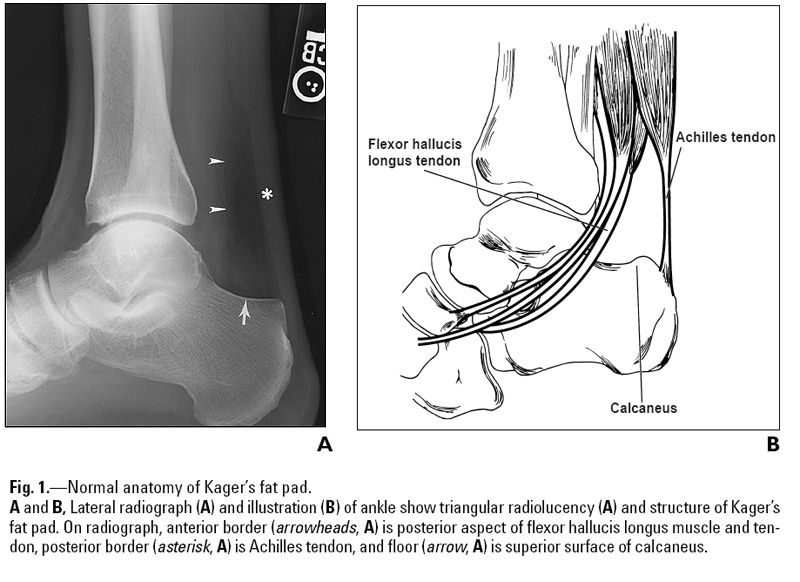
 This will reduce the load on the tendon and muscles
This will reduce the load on the tendon and muscles